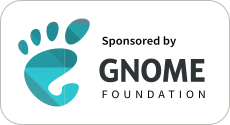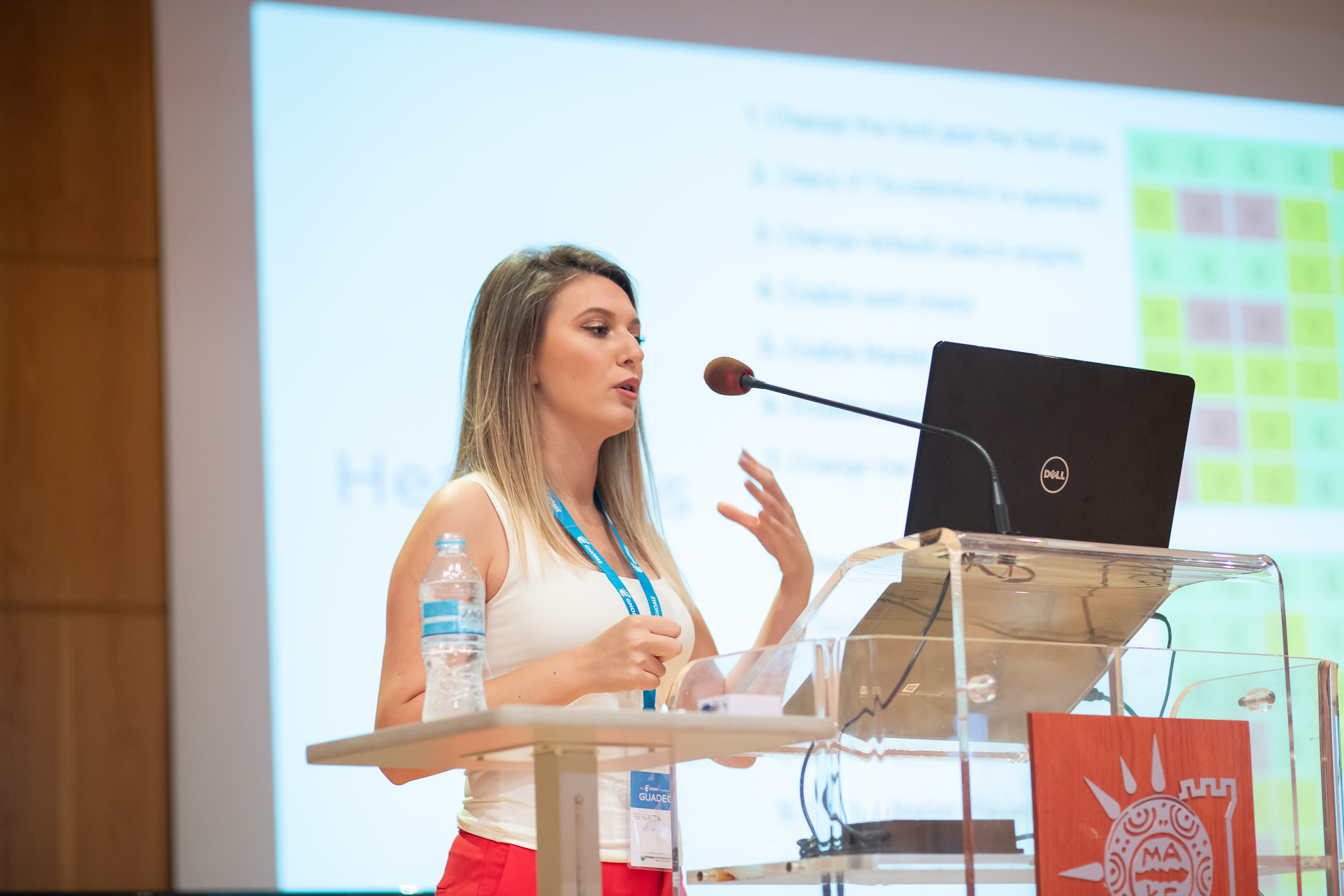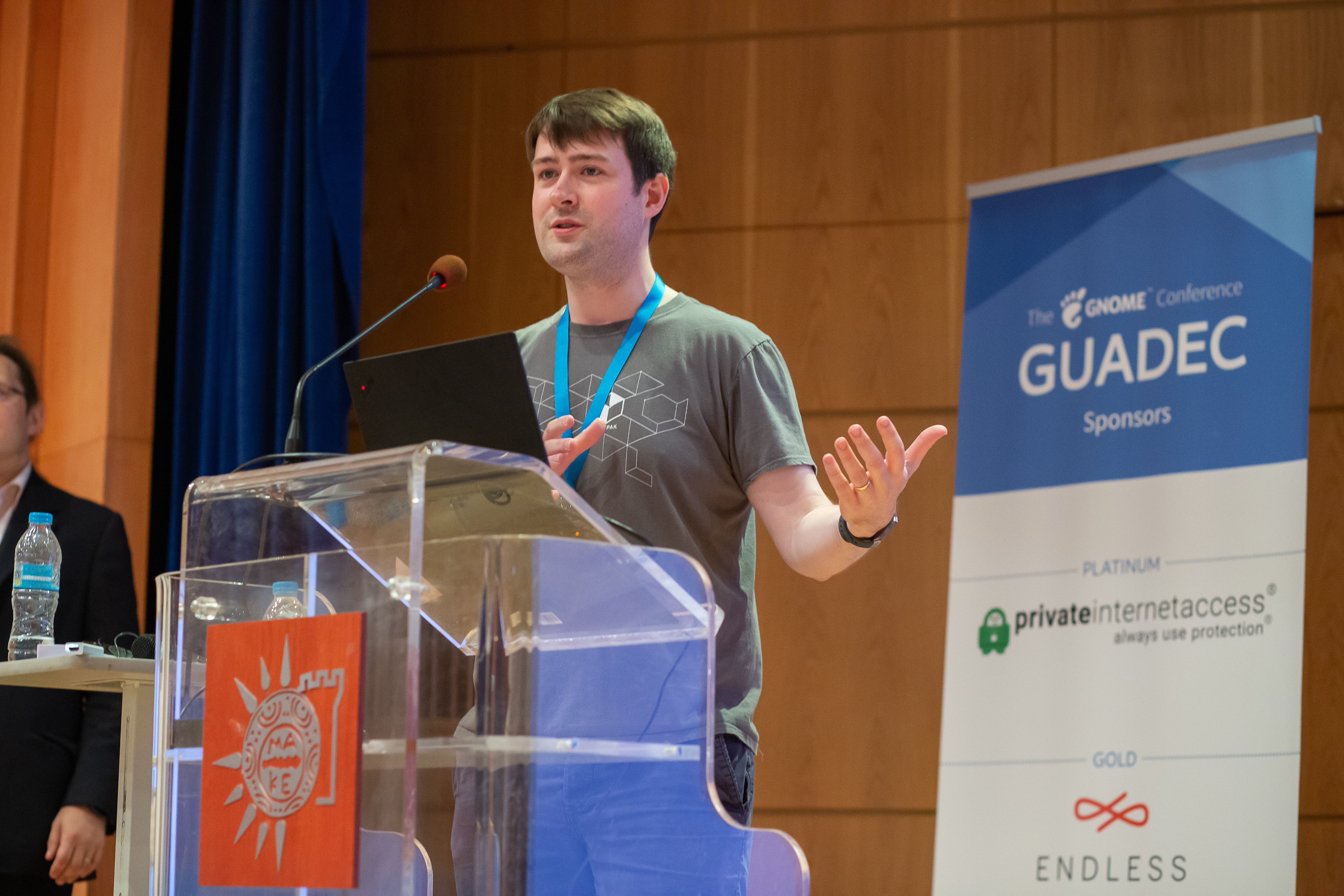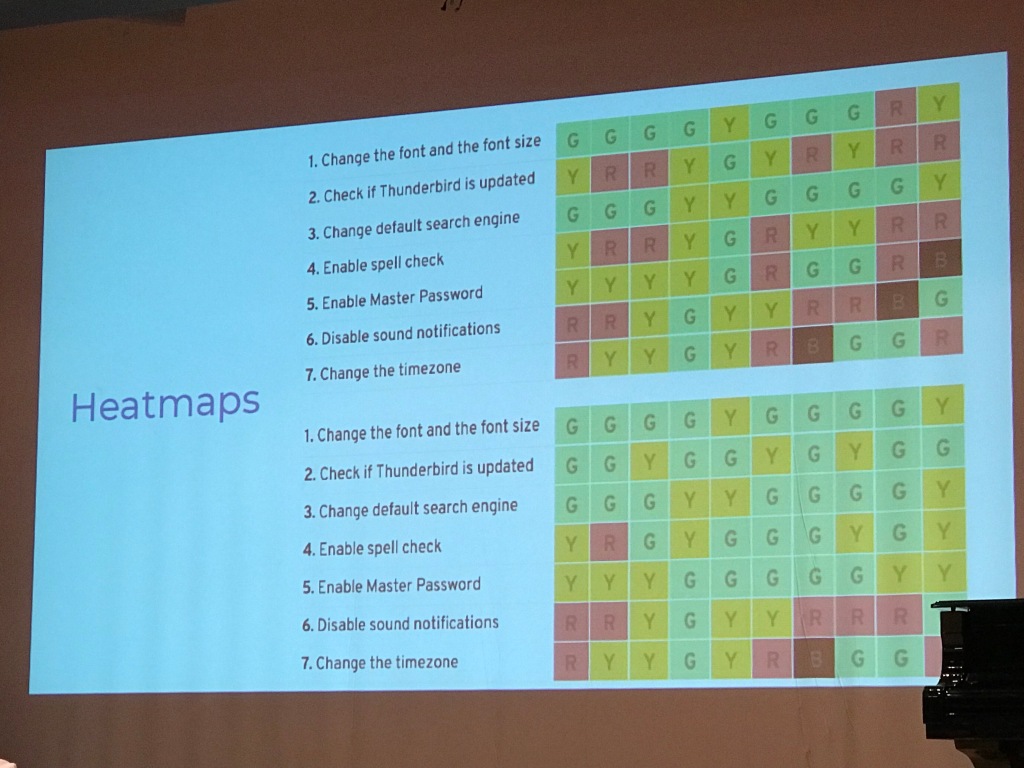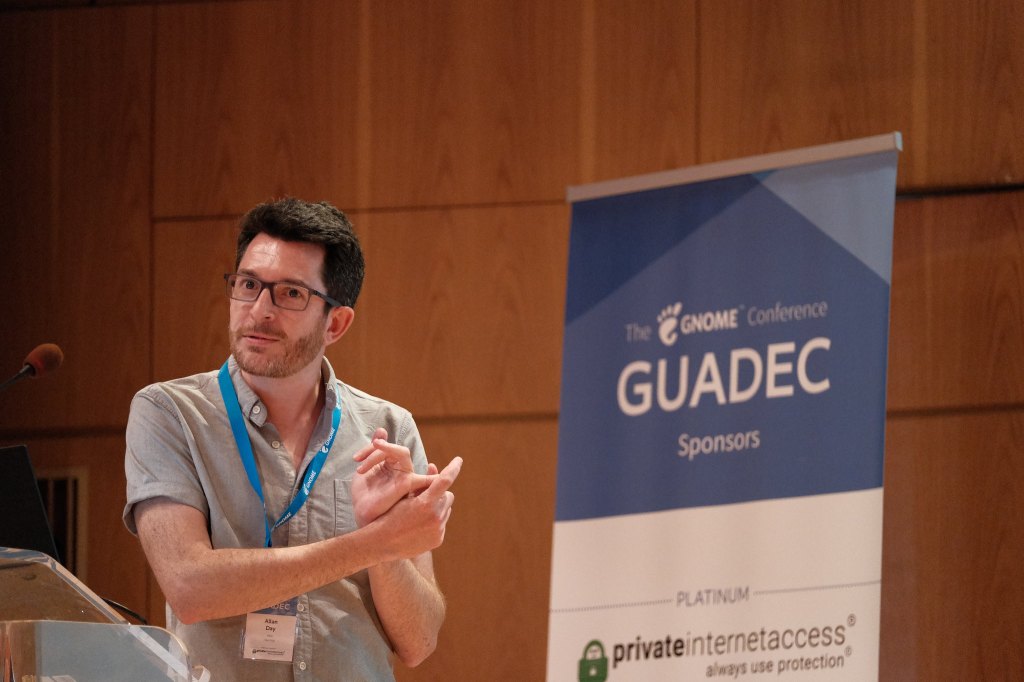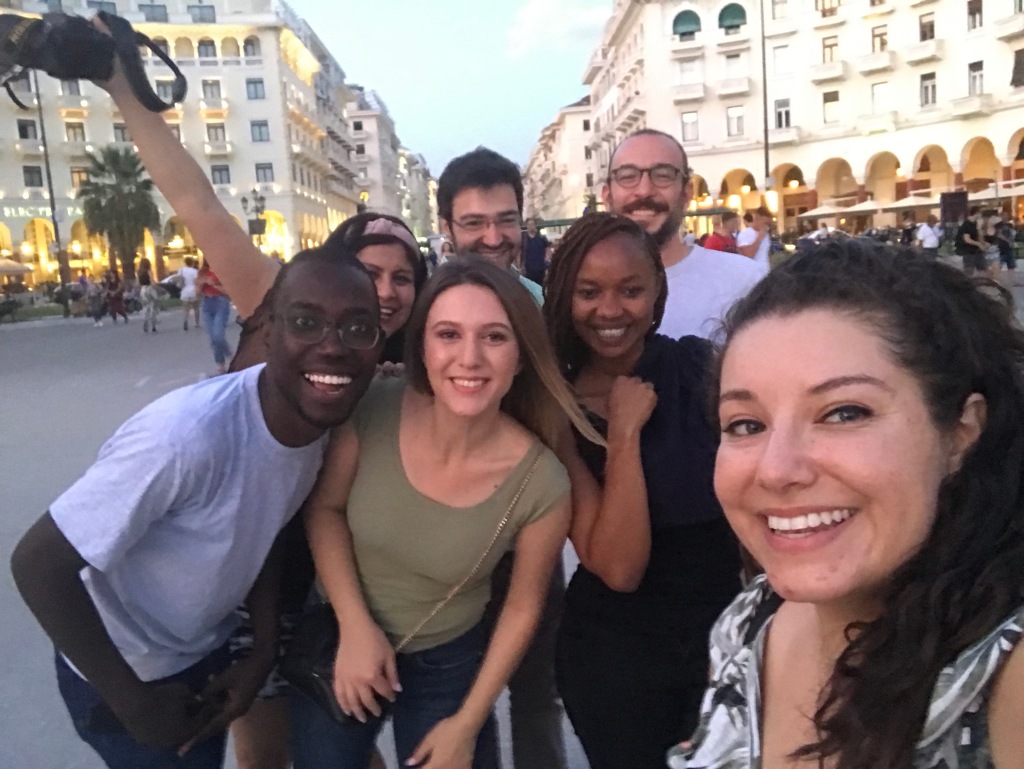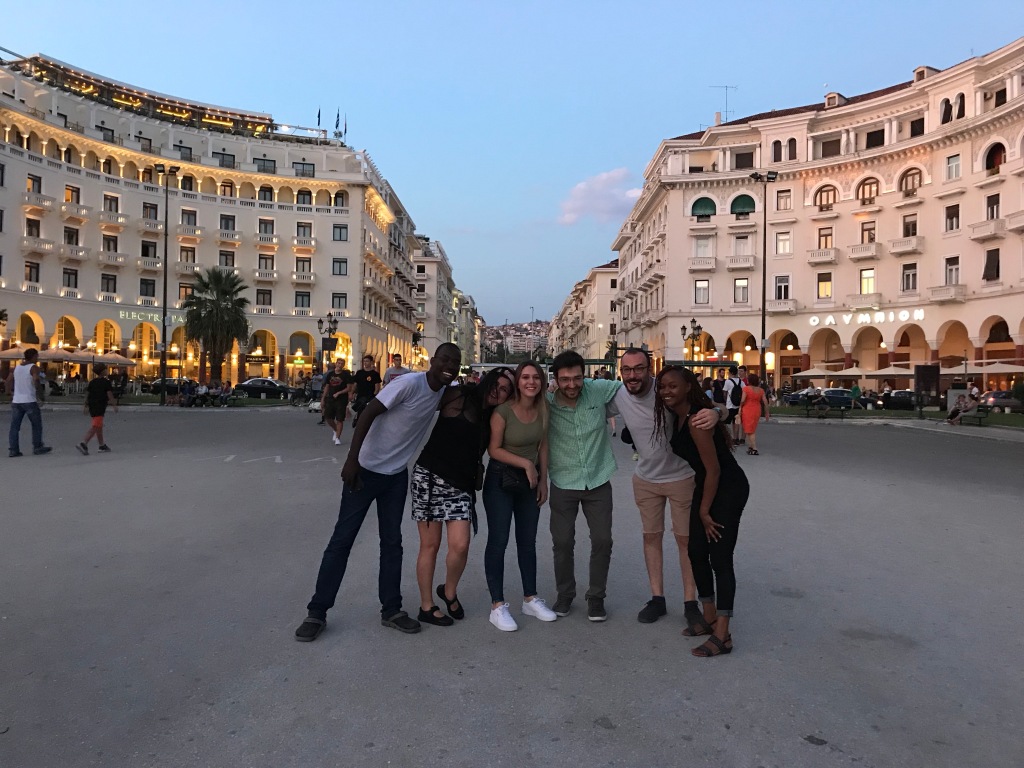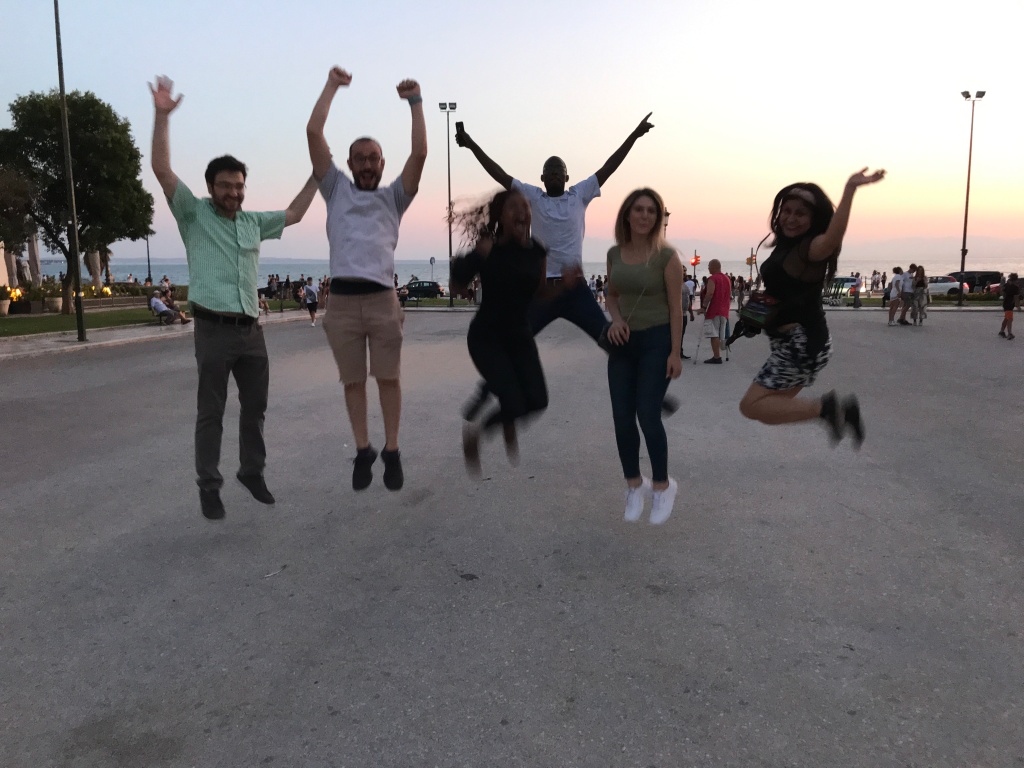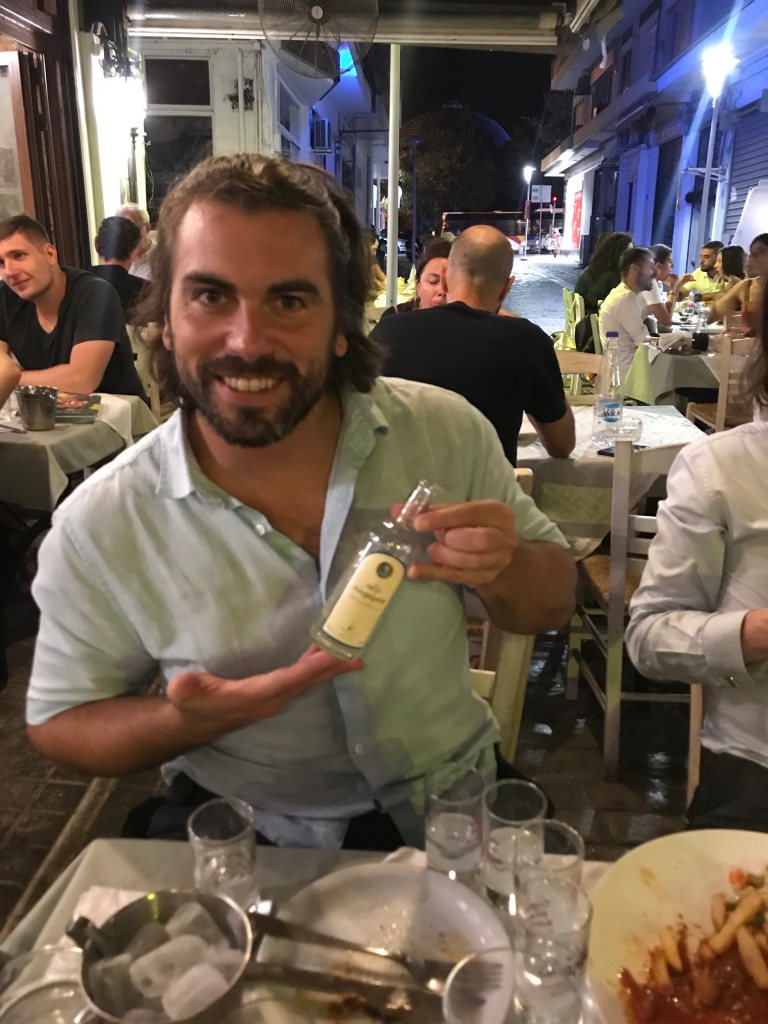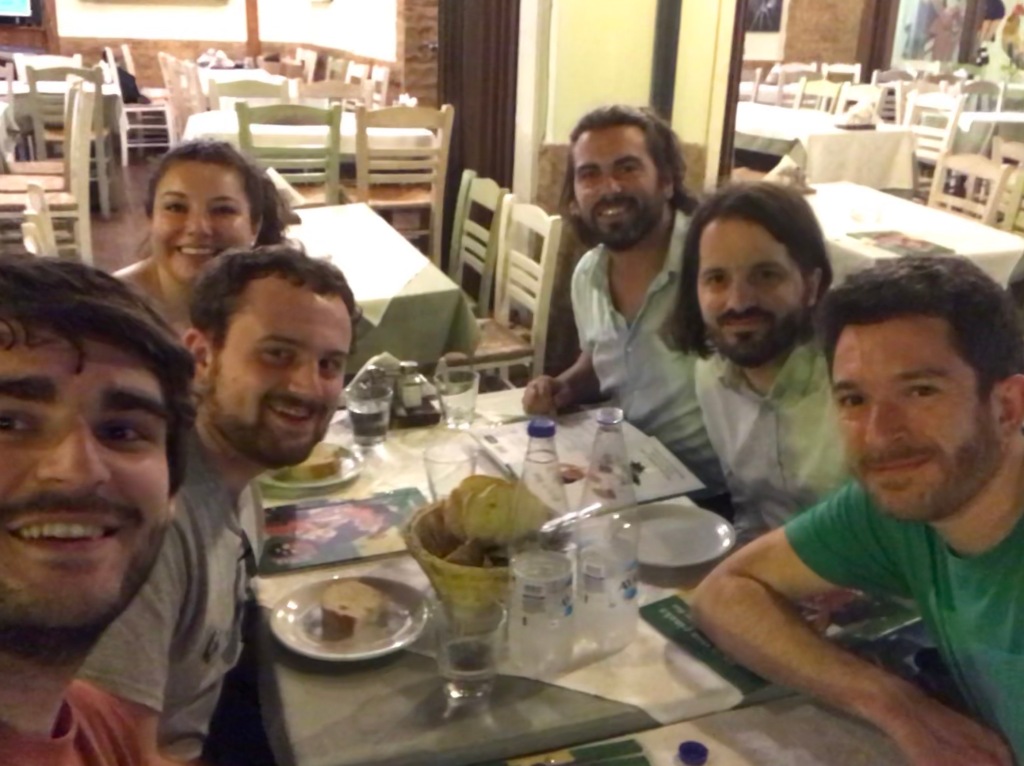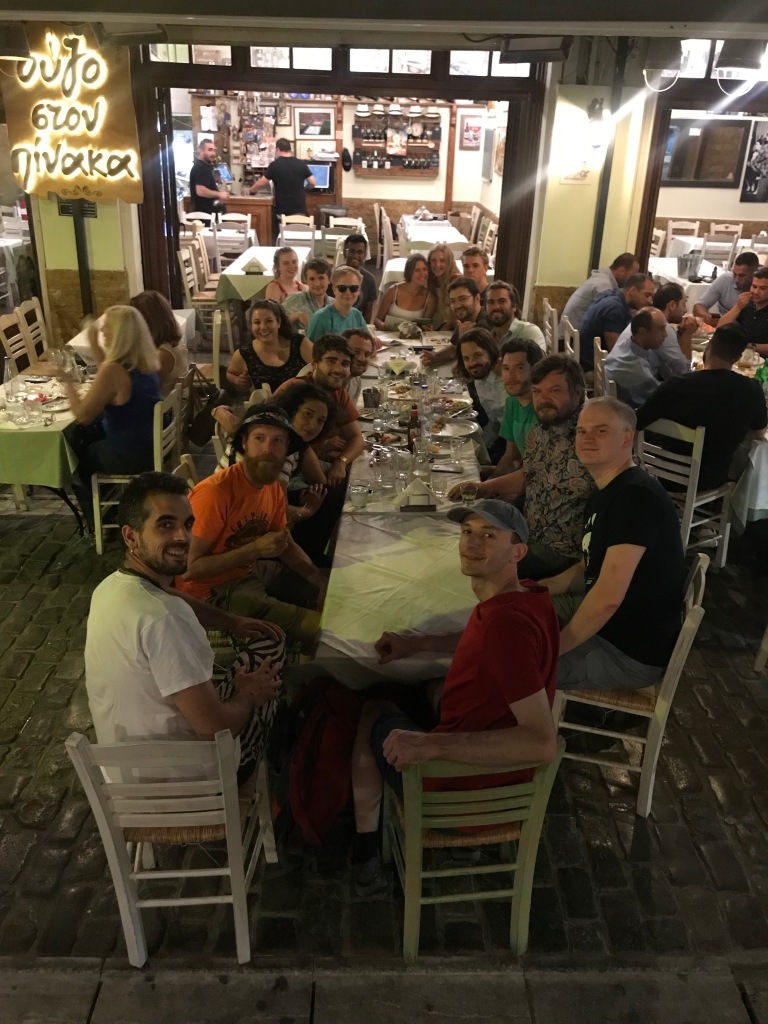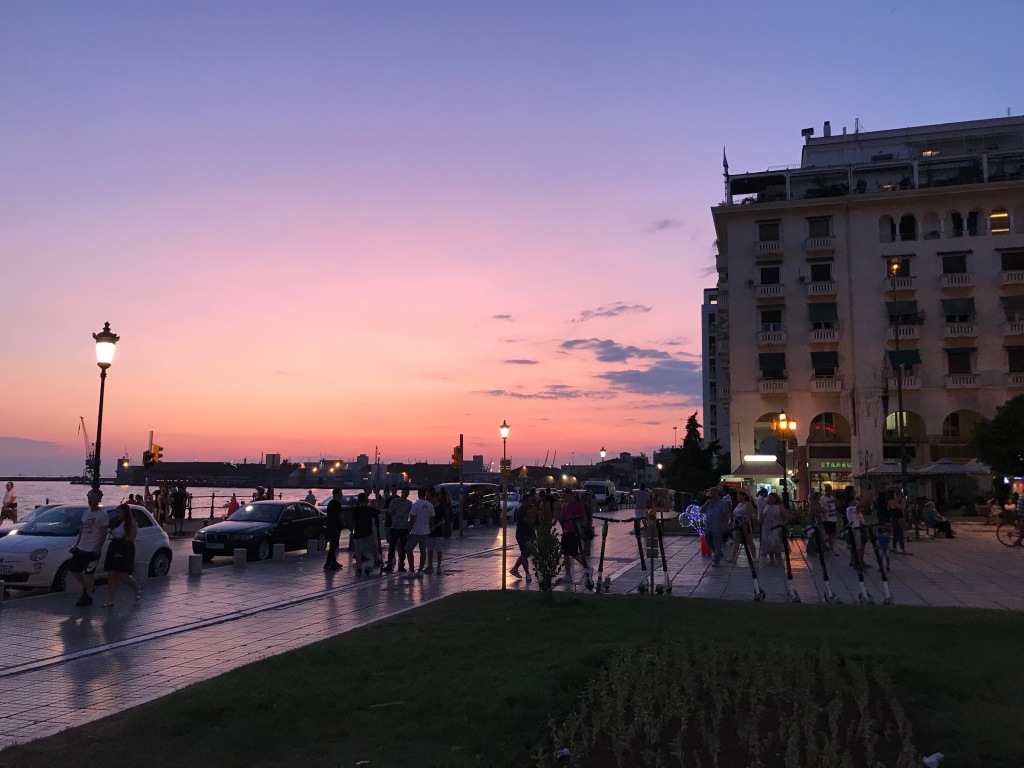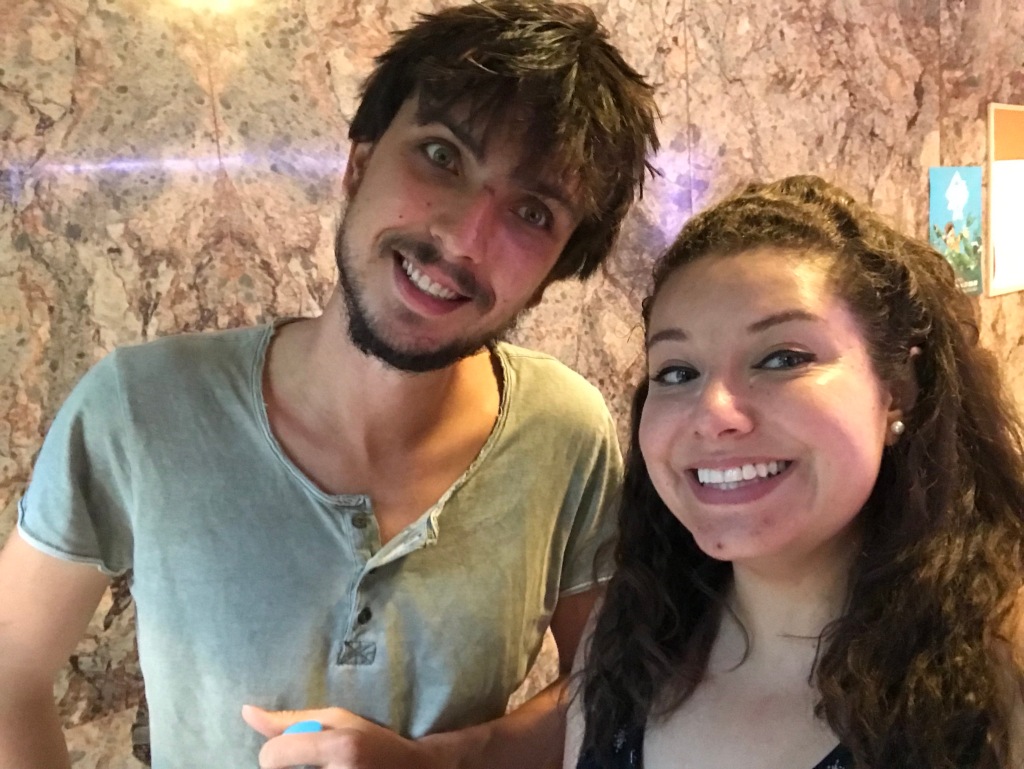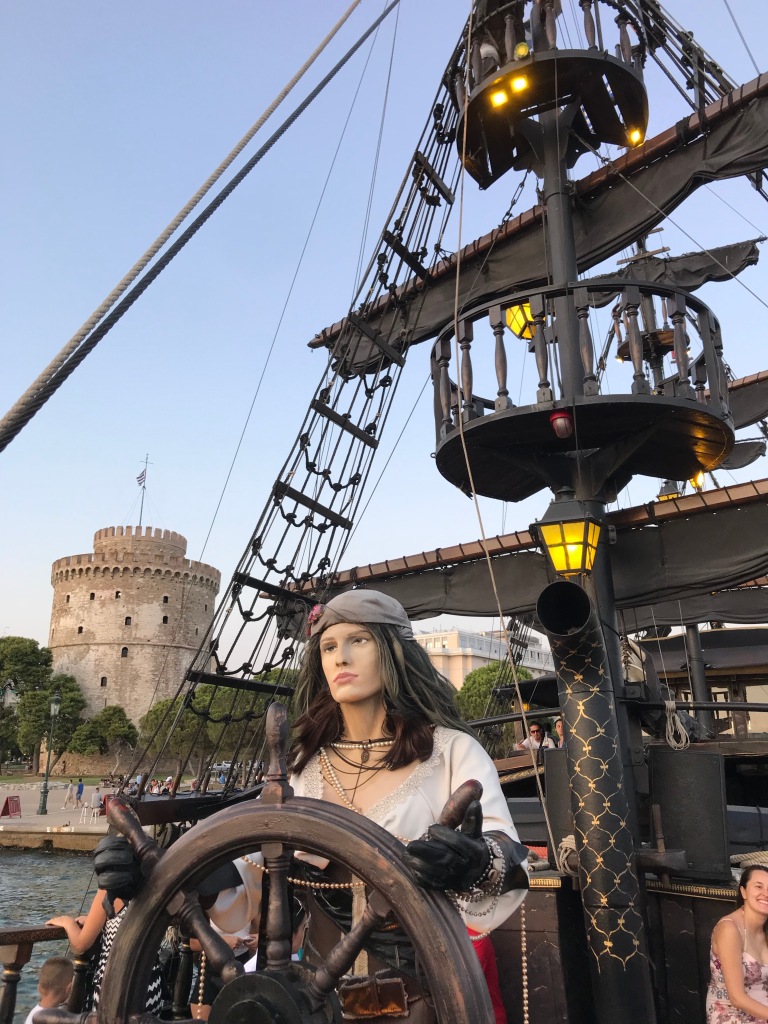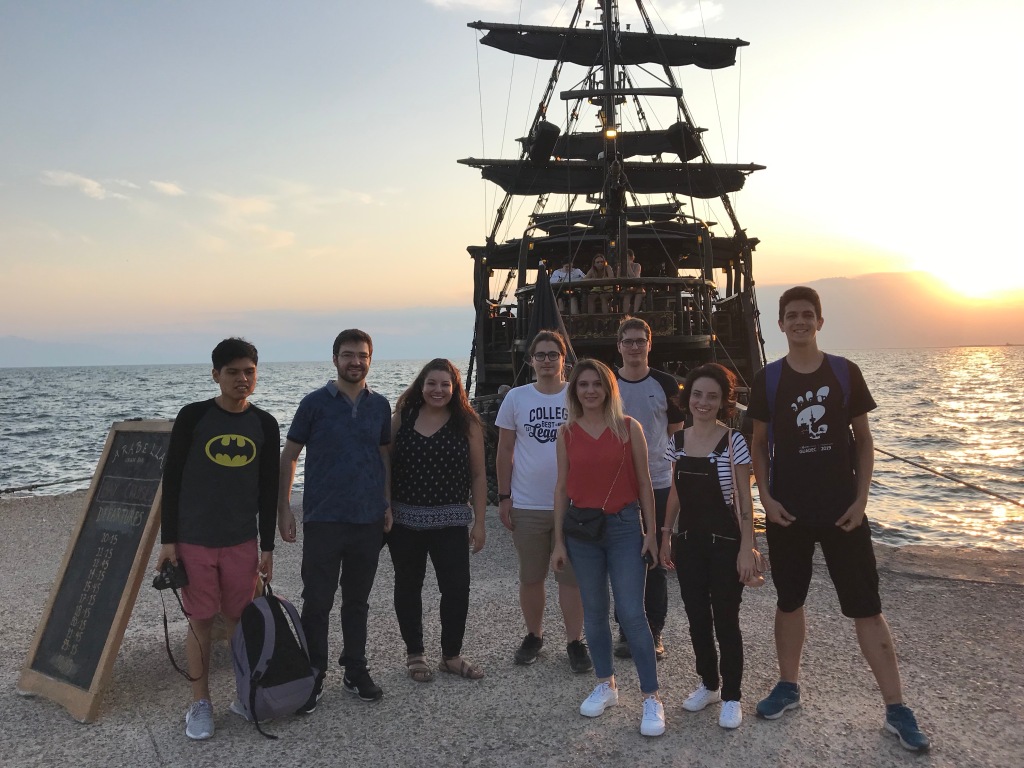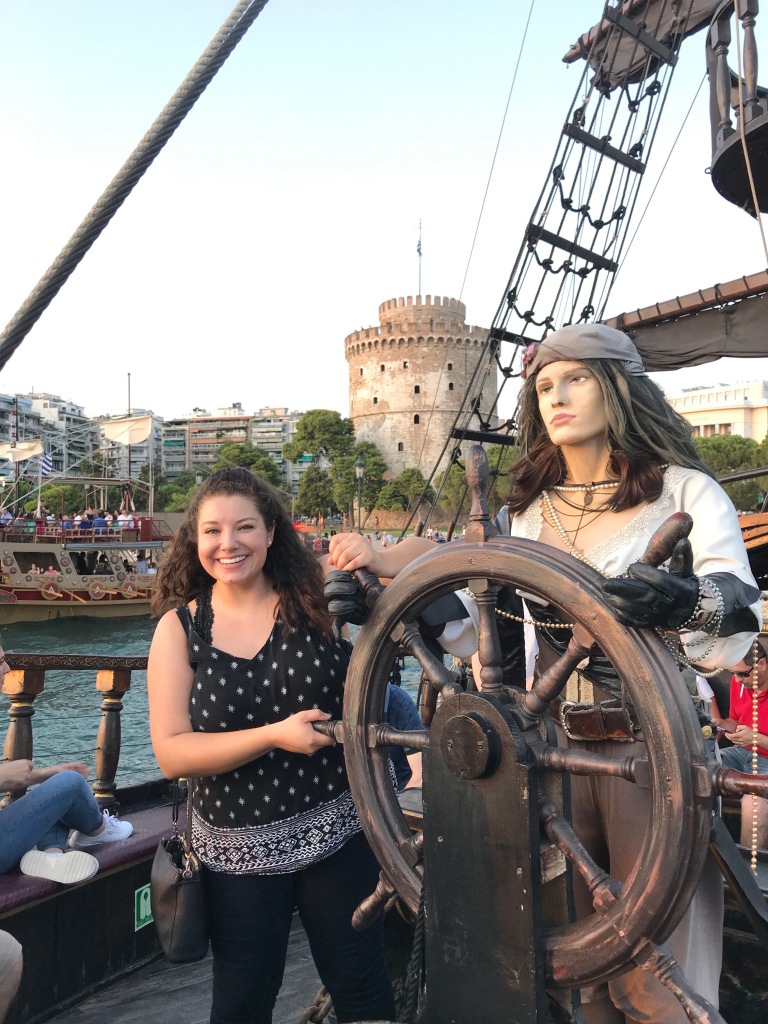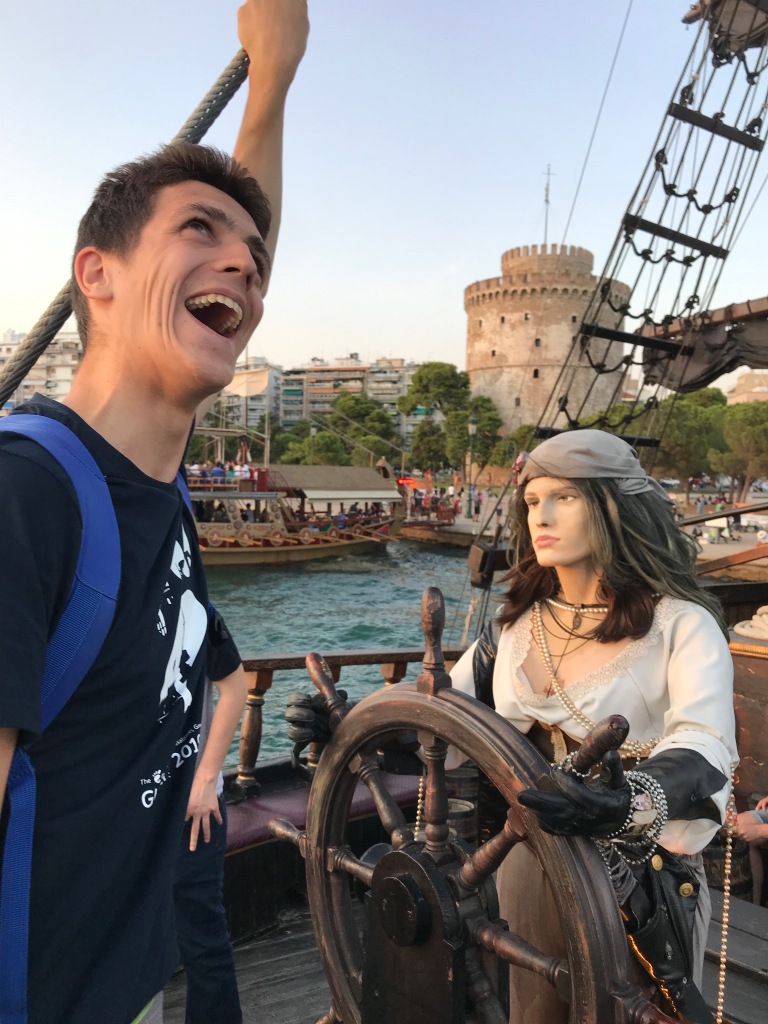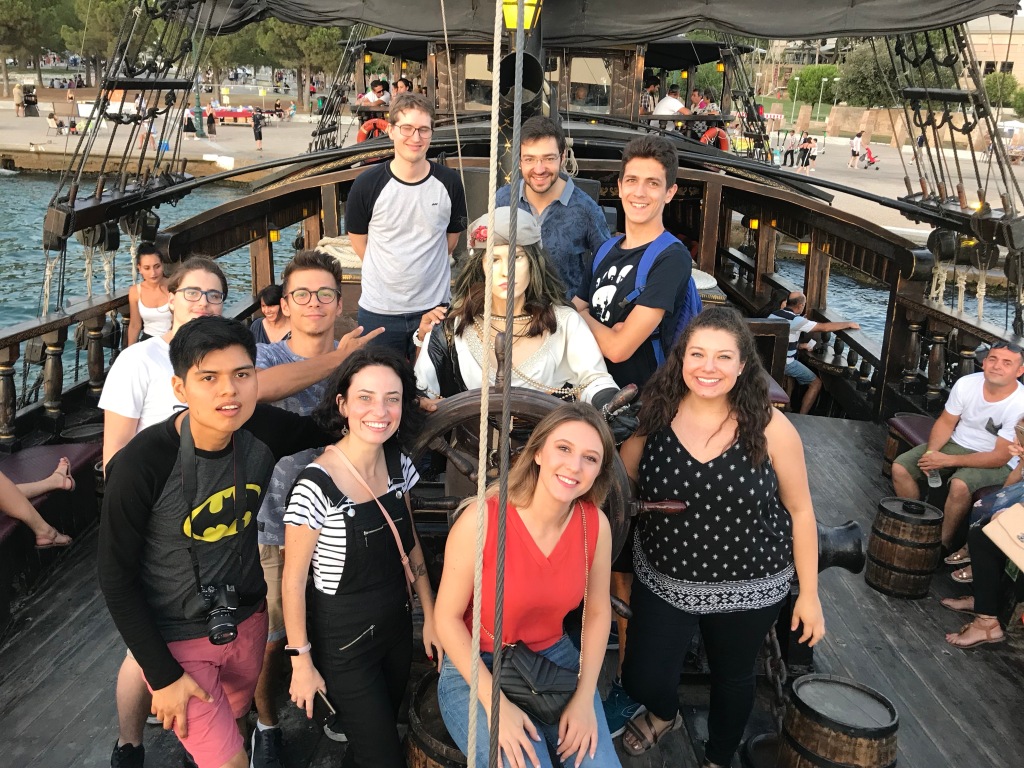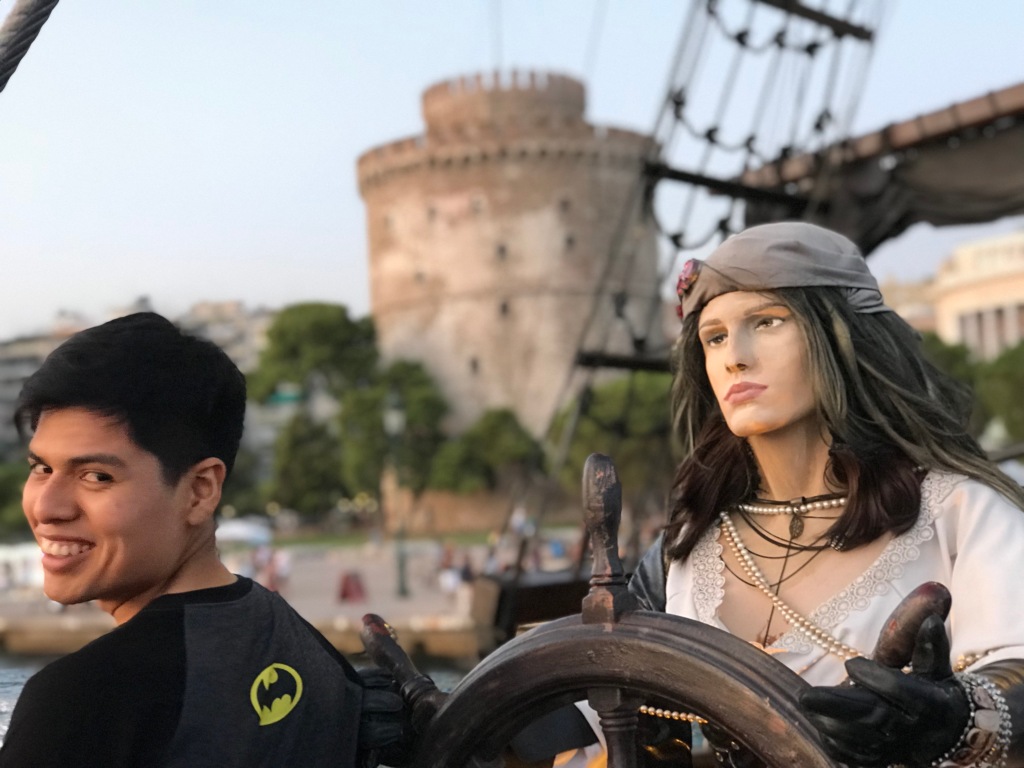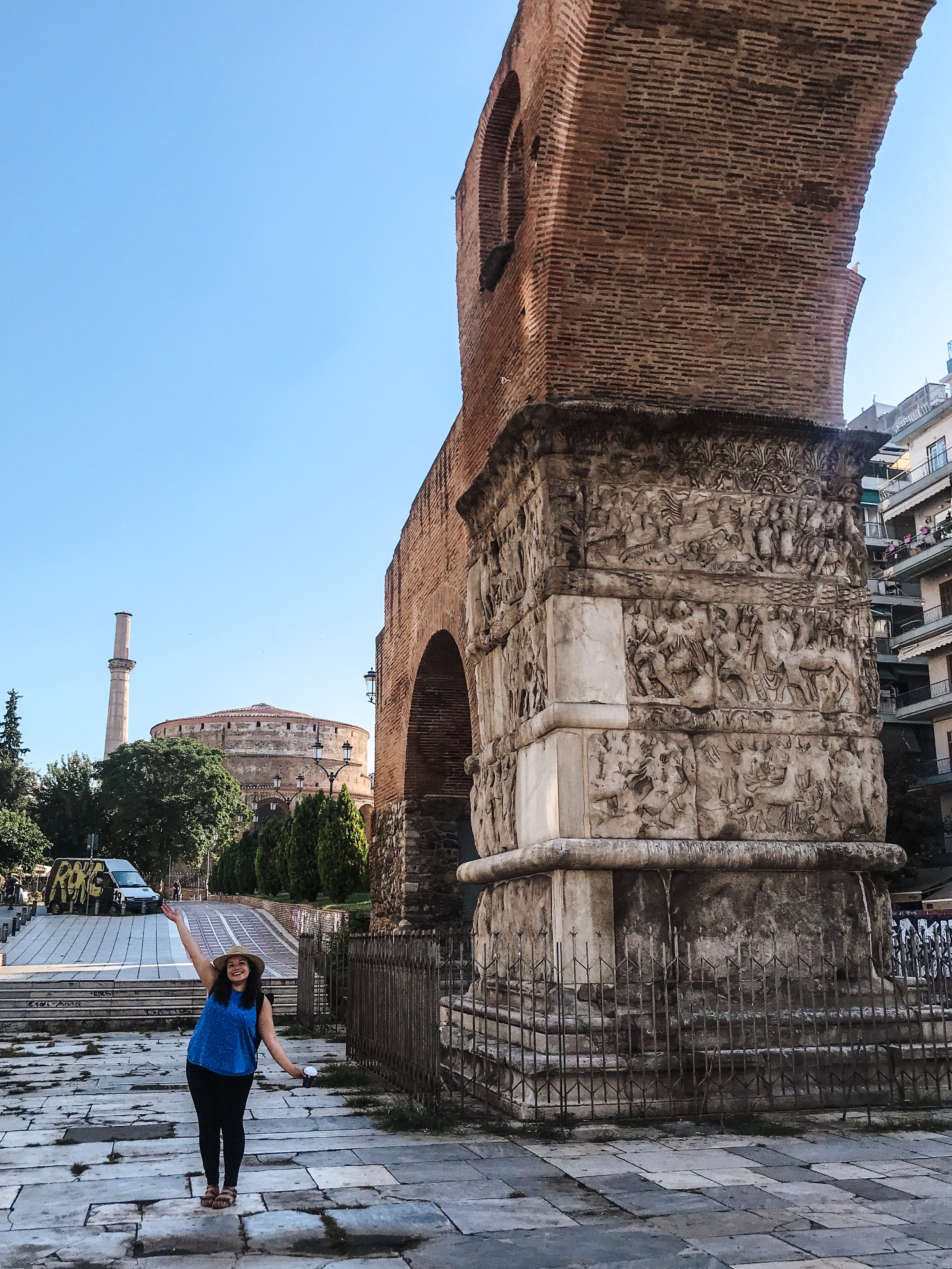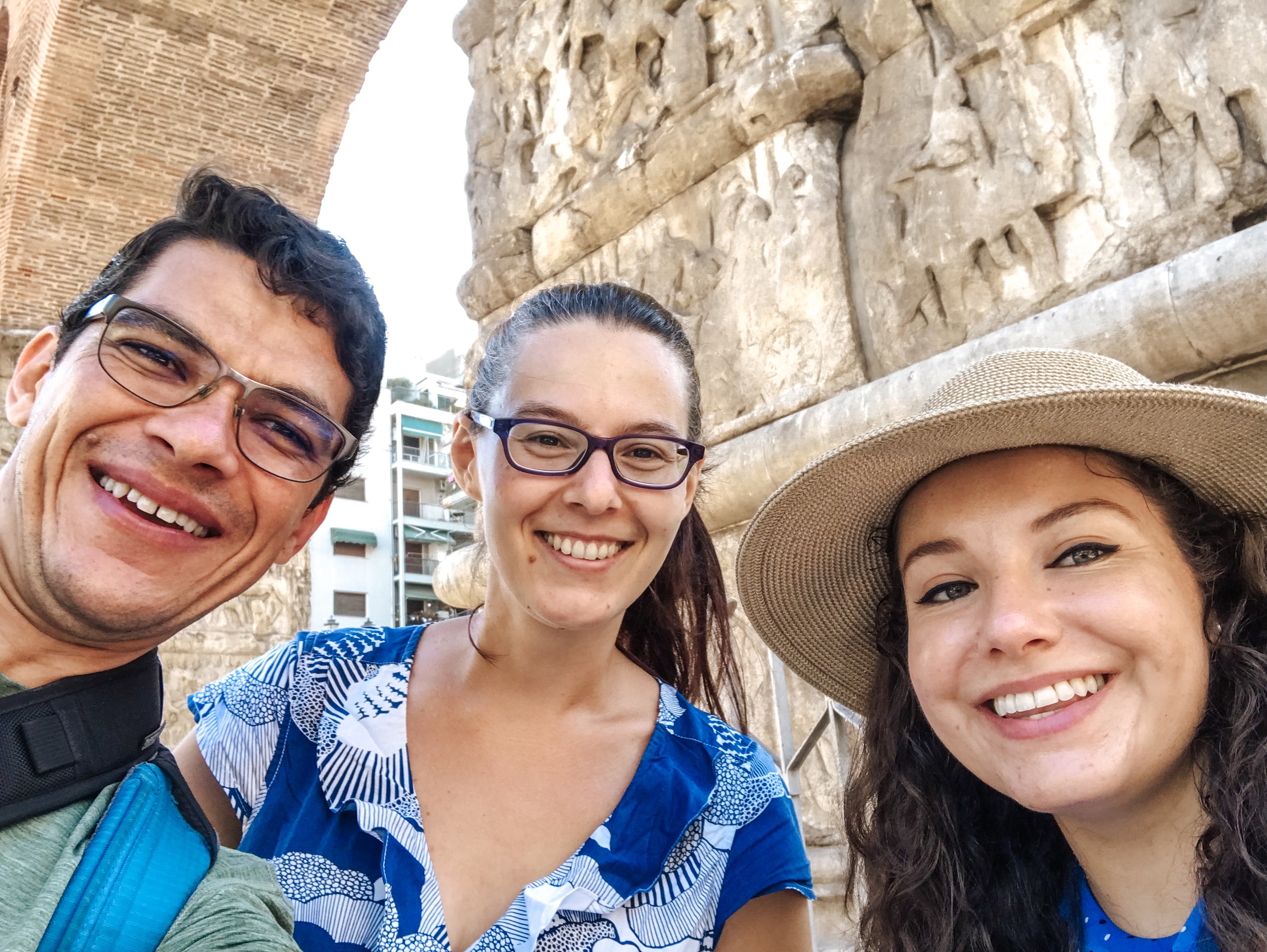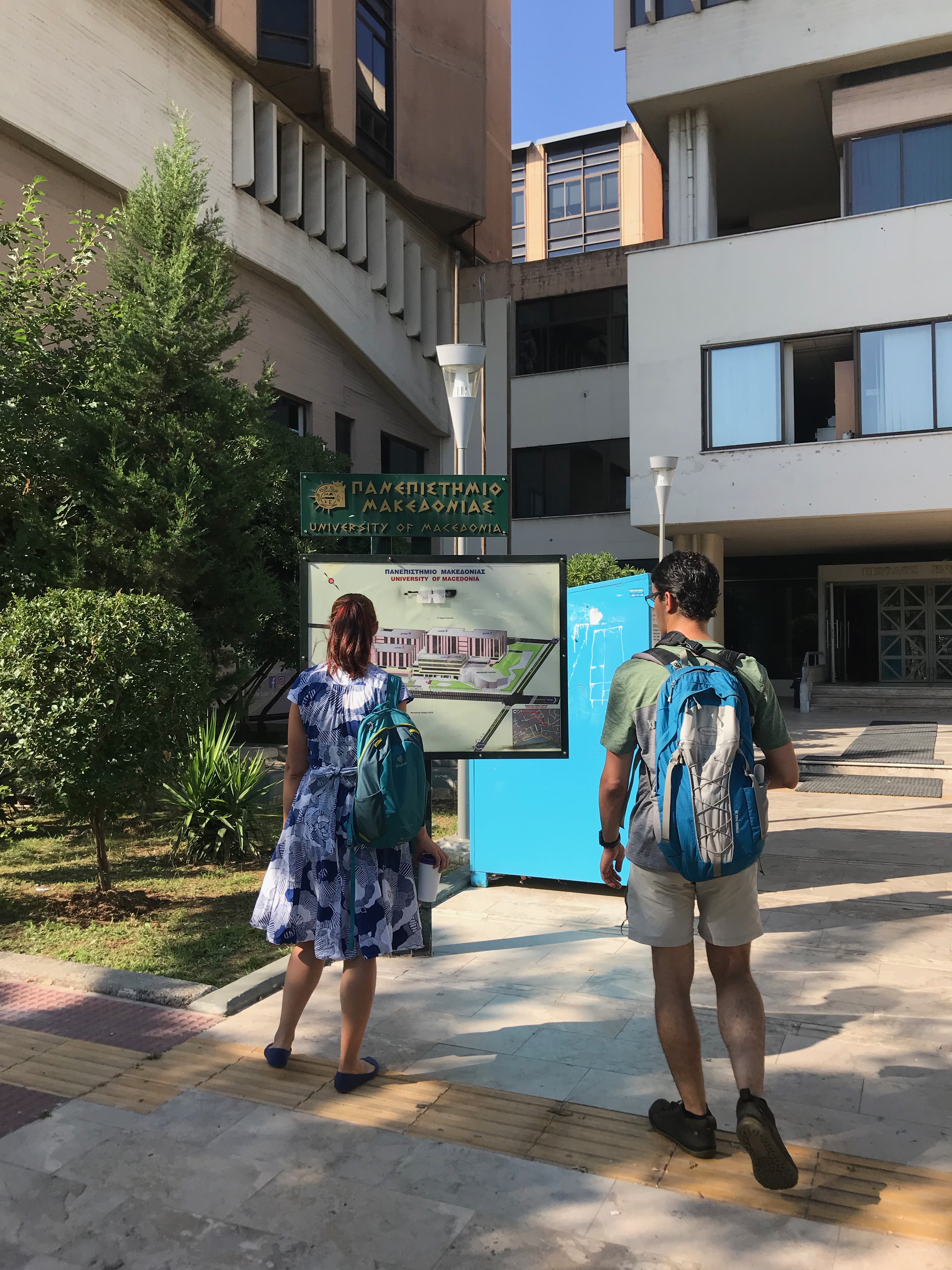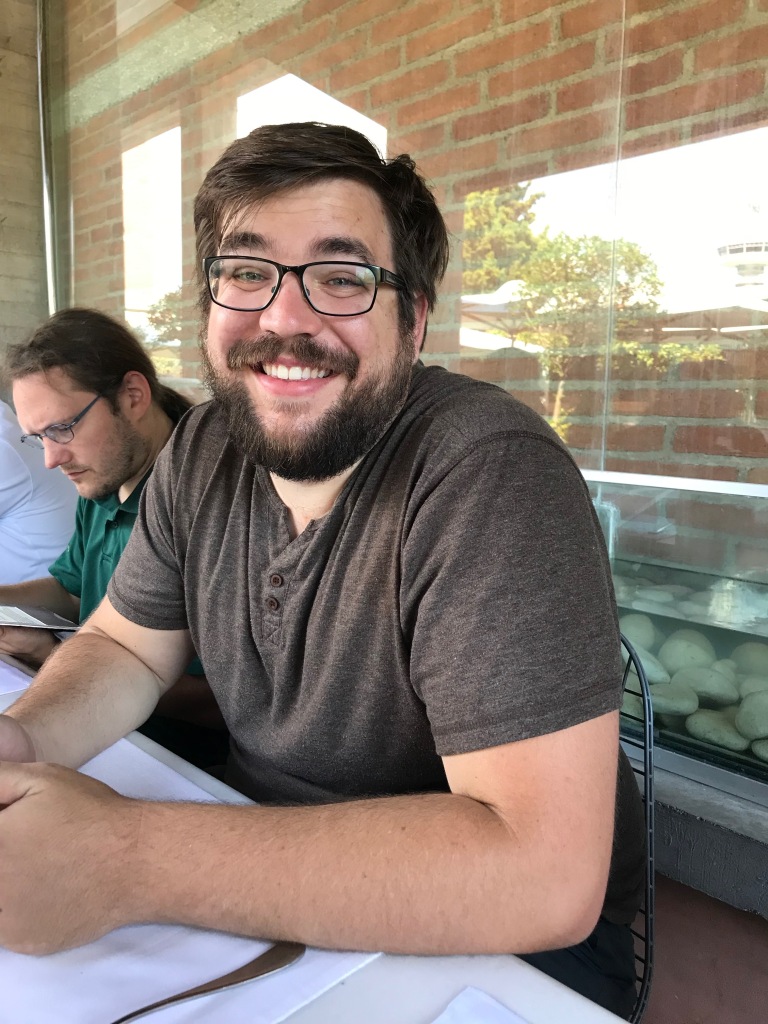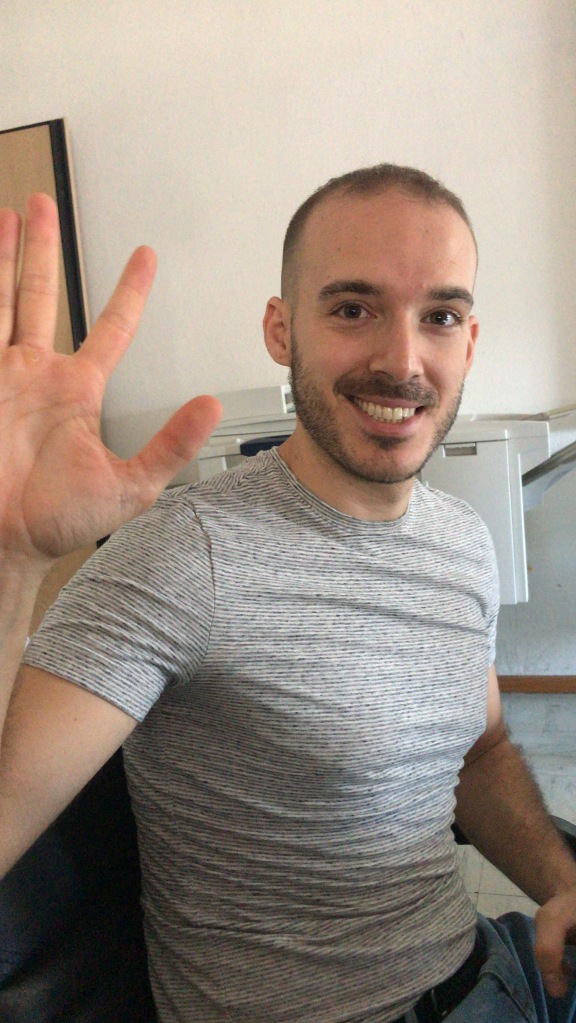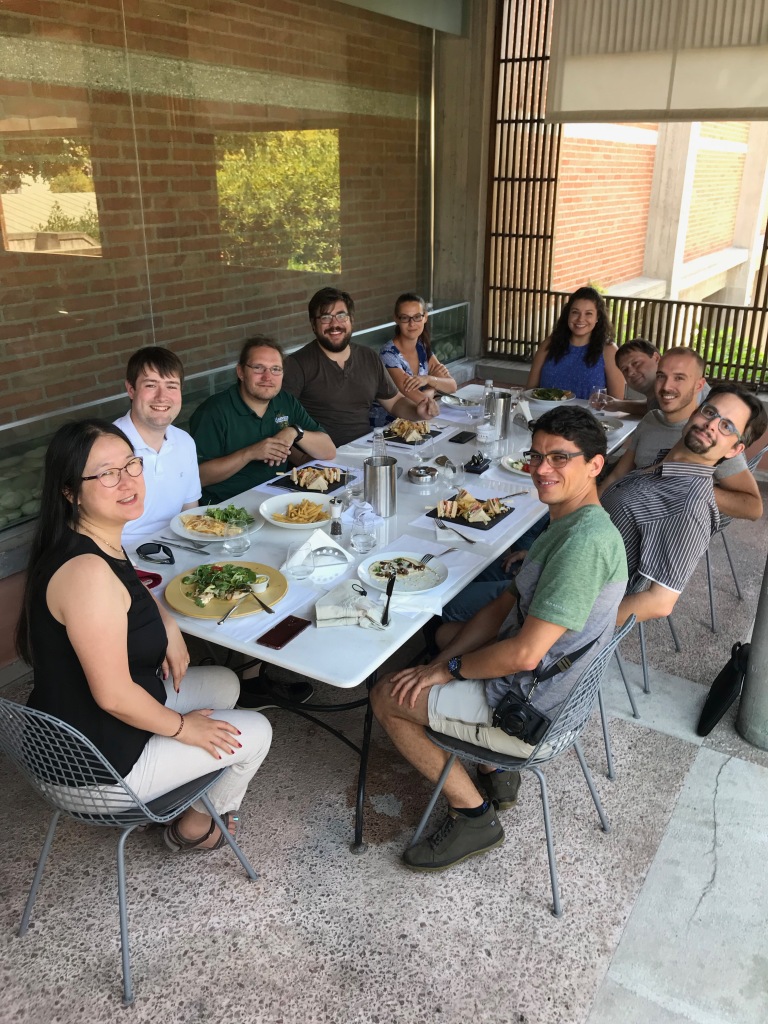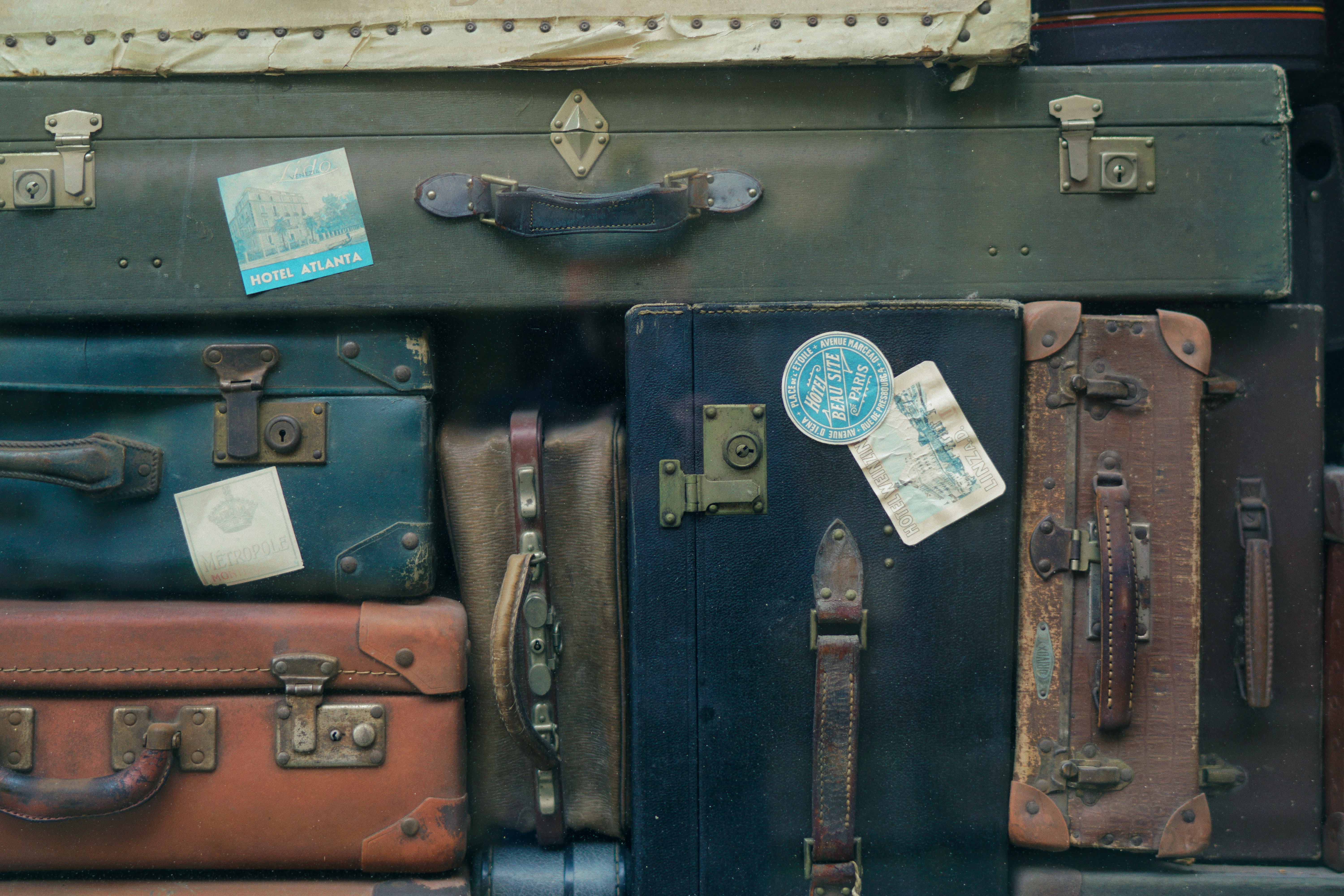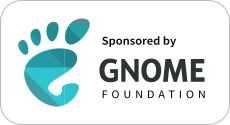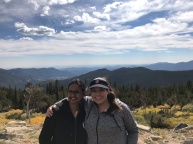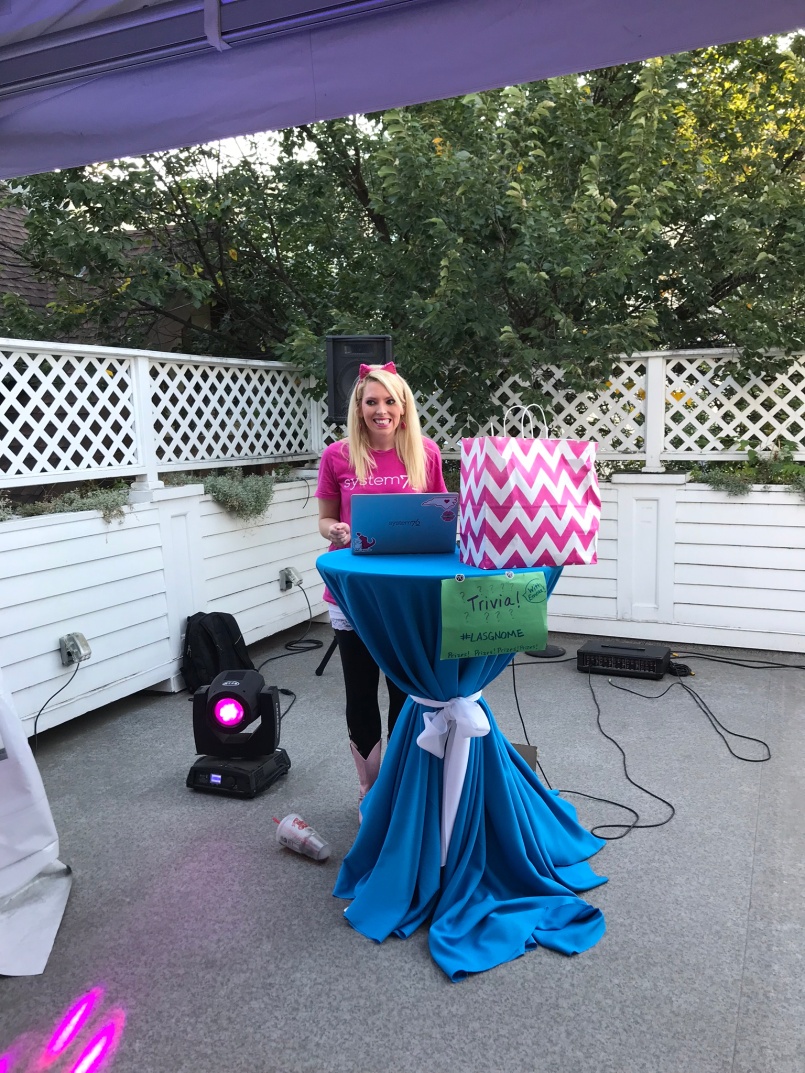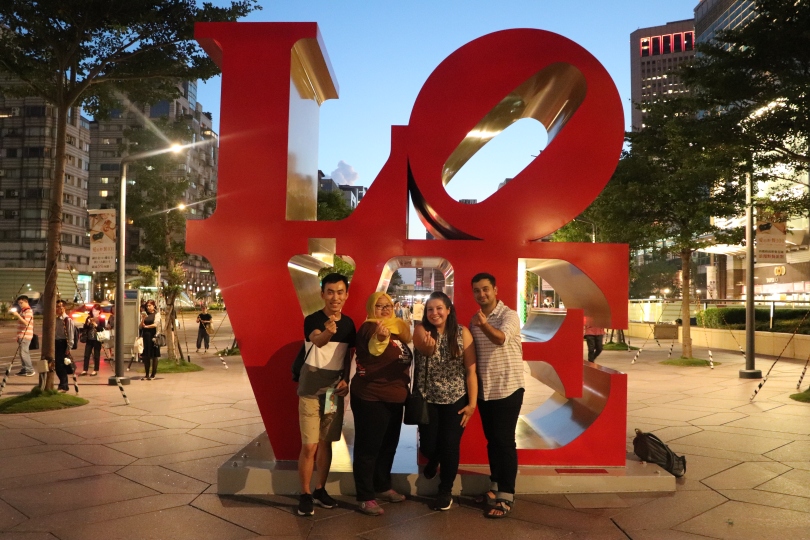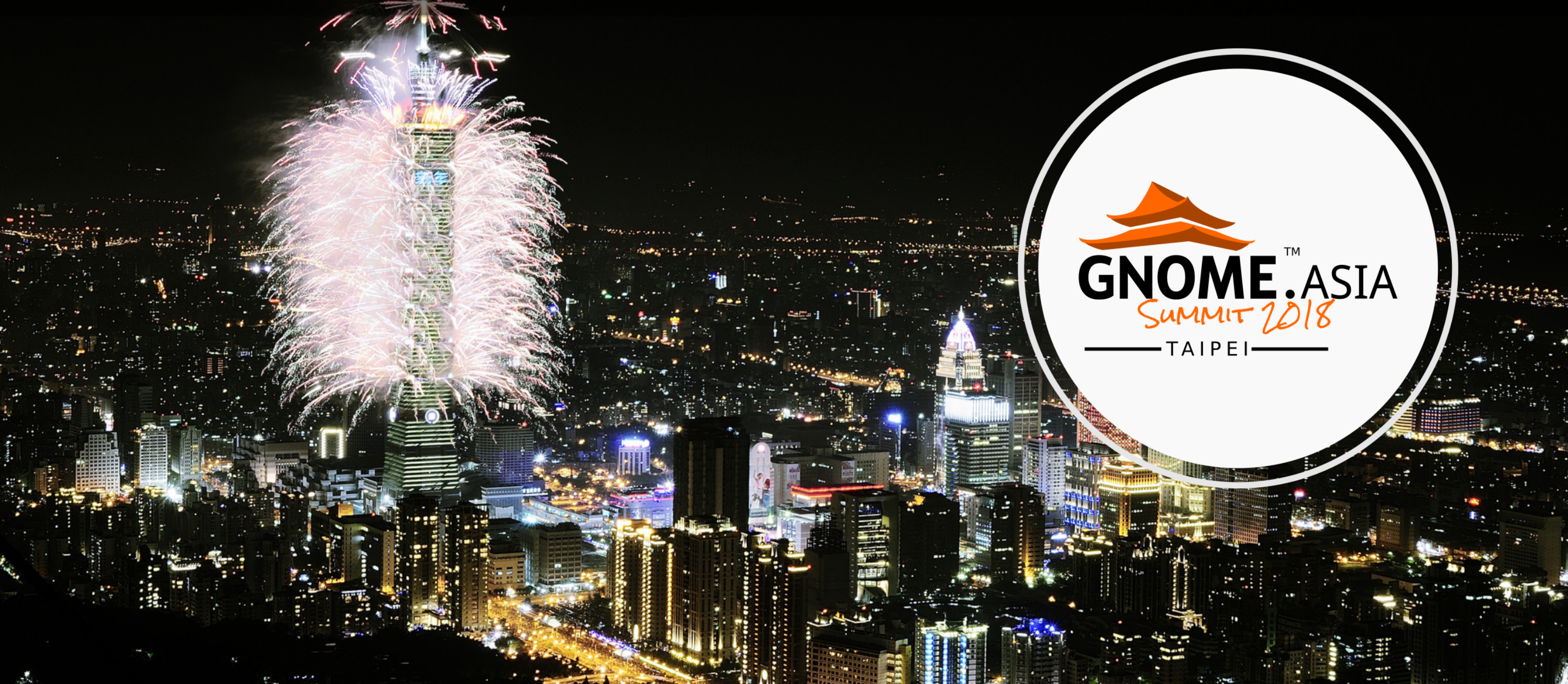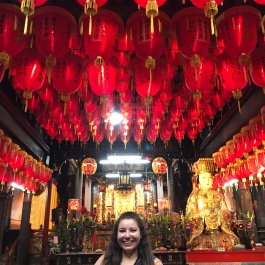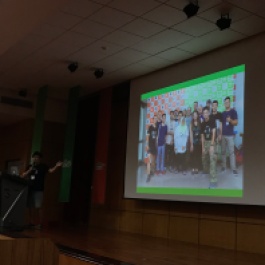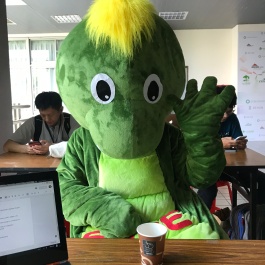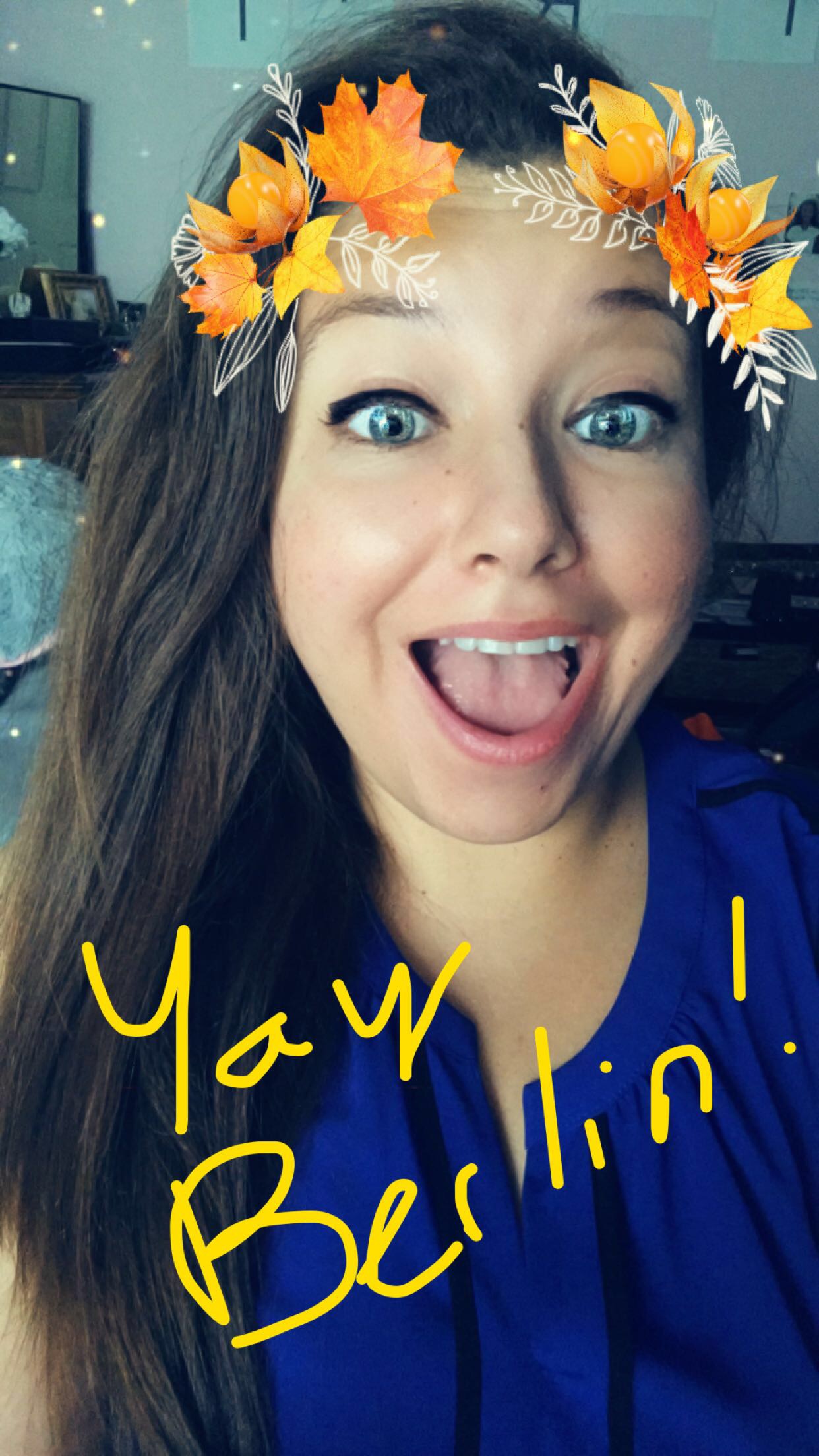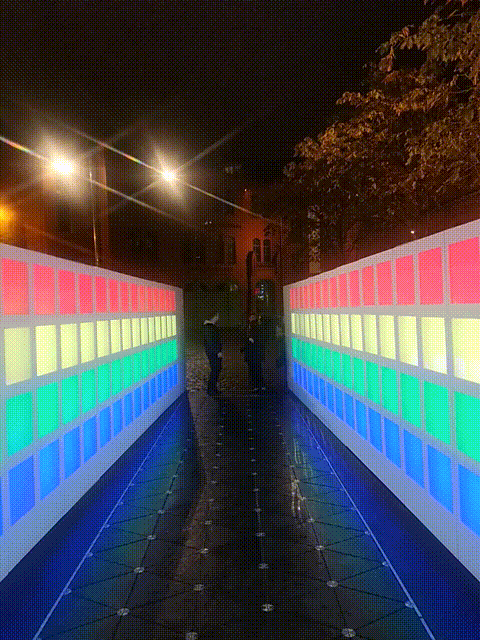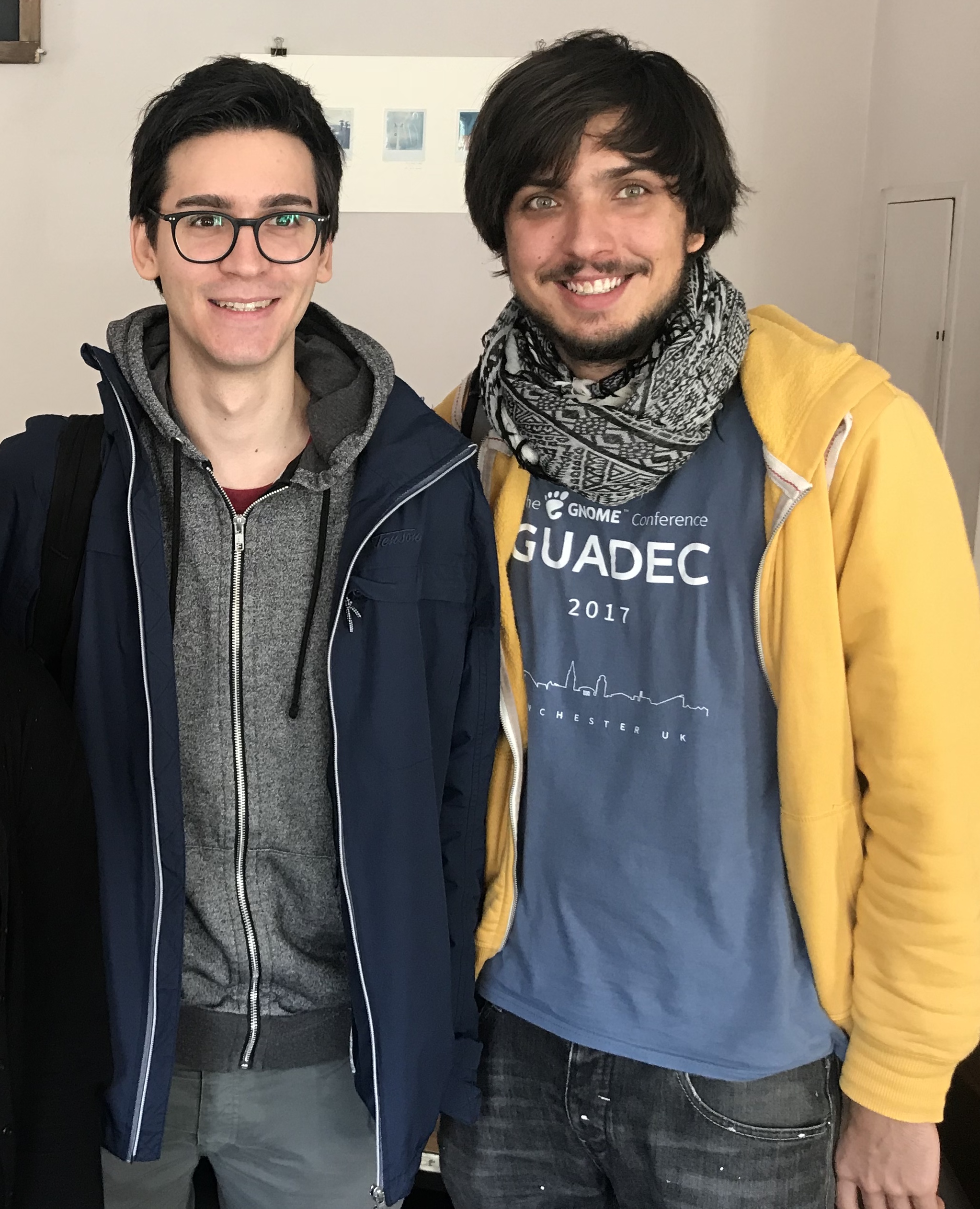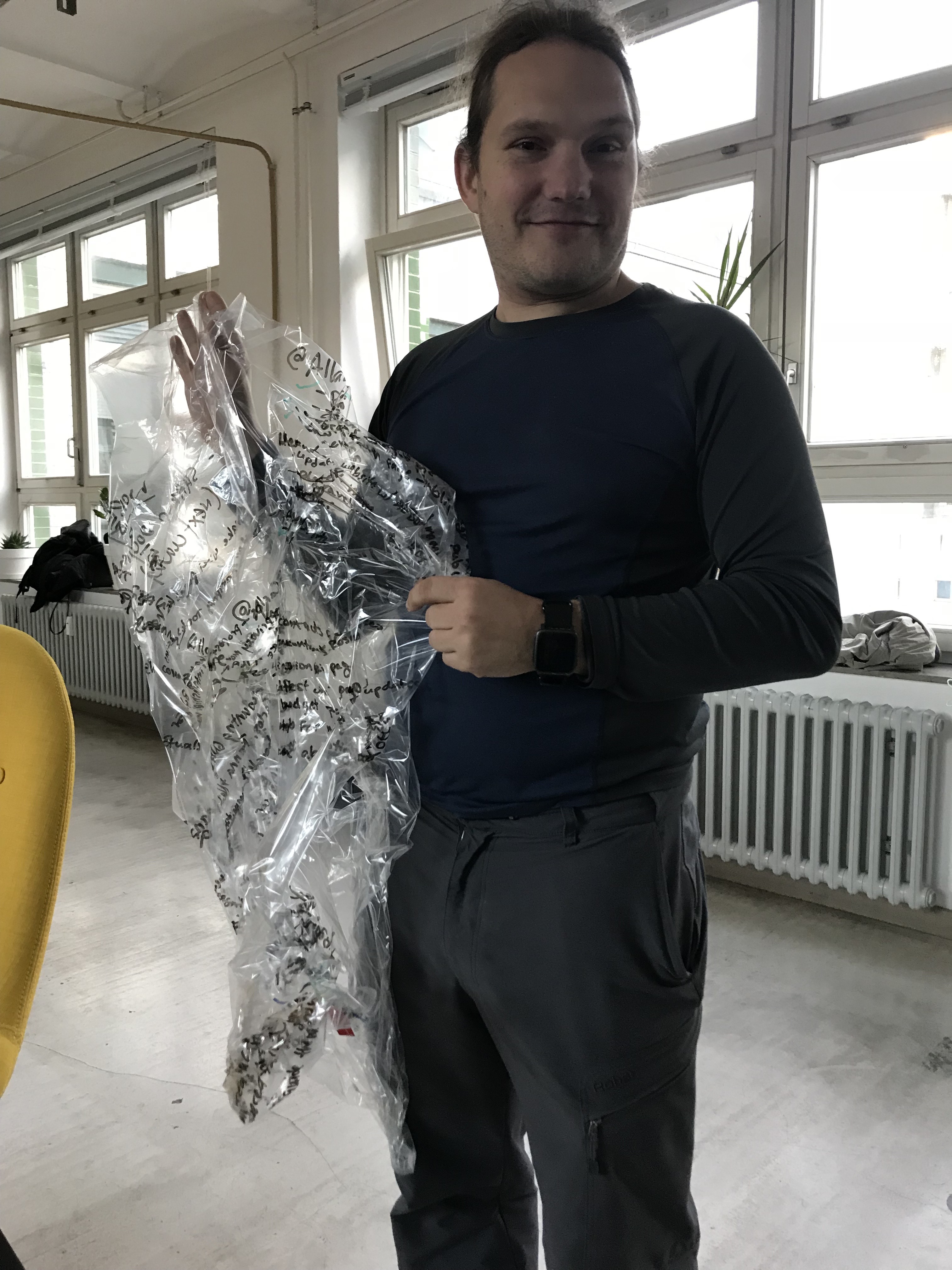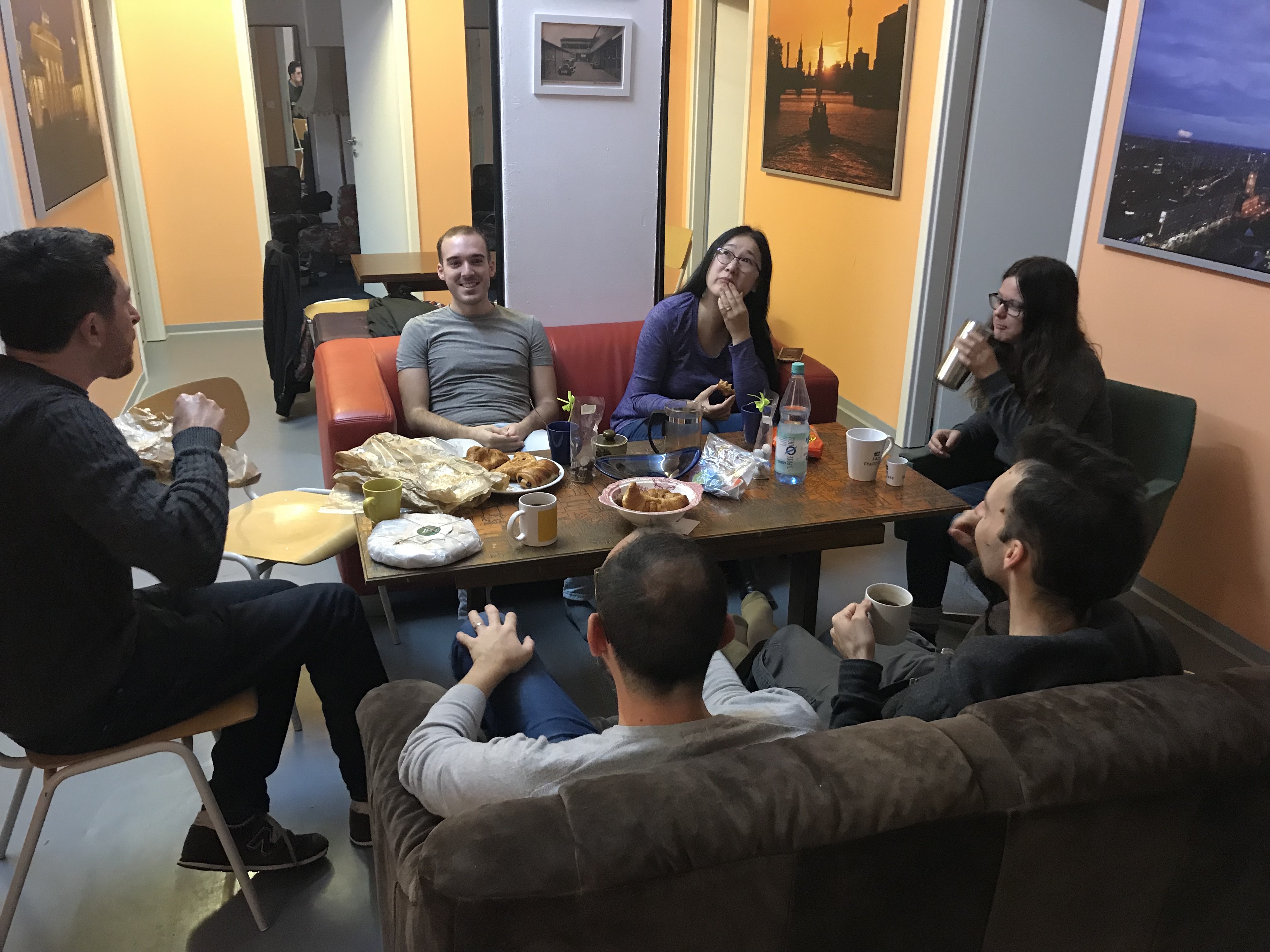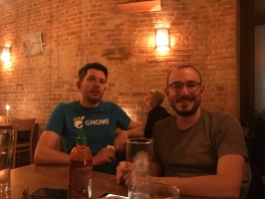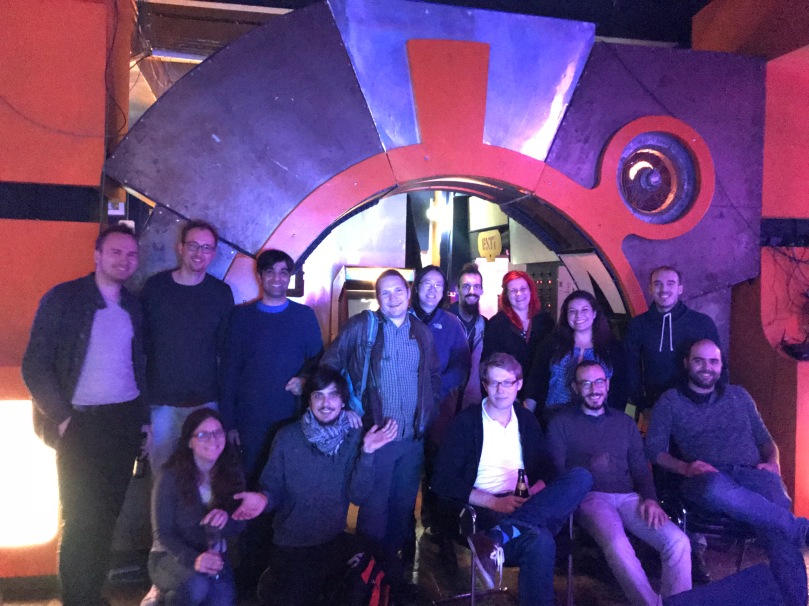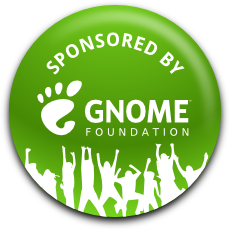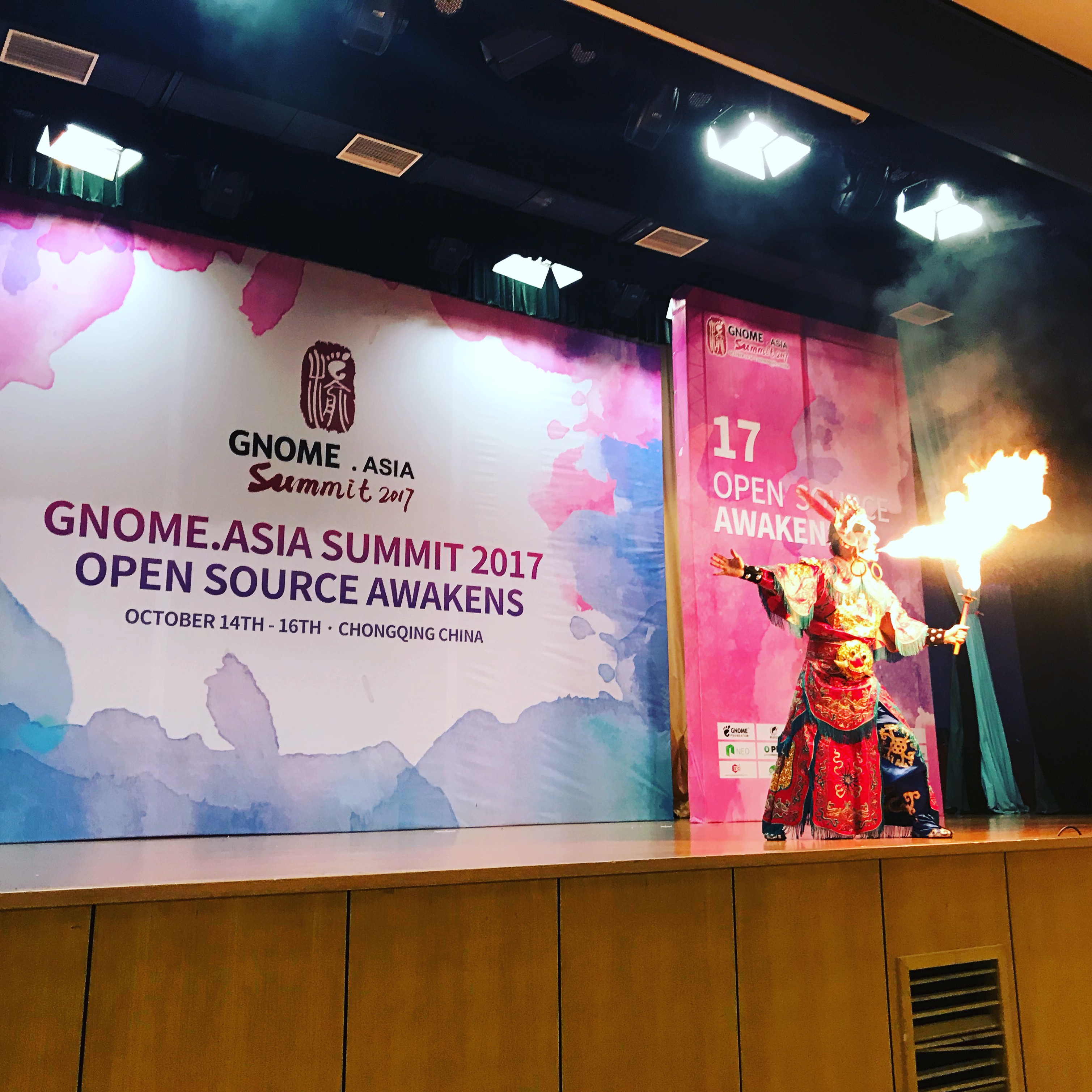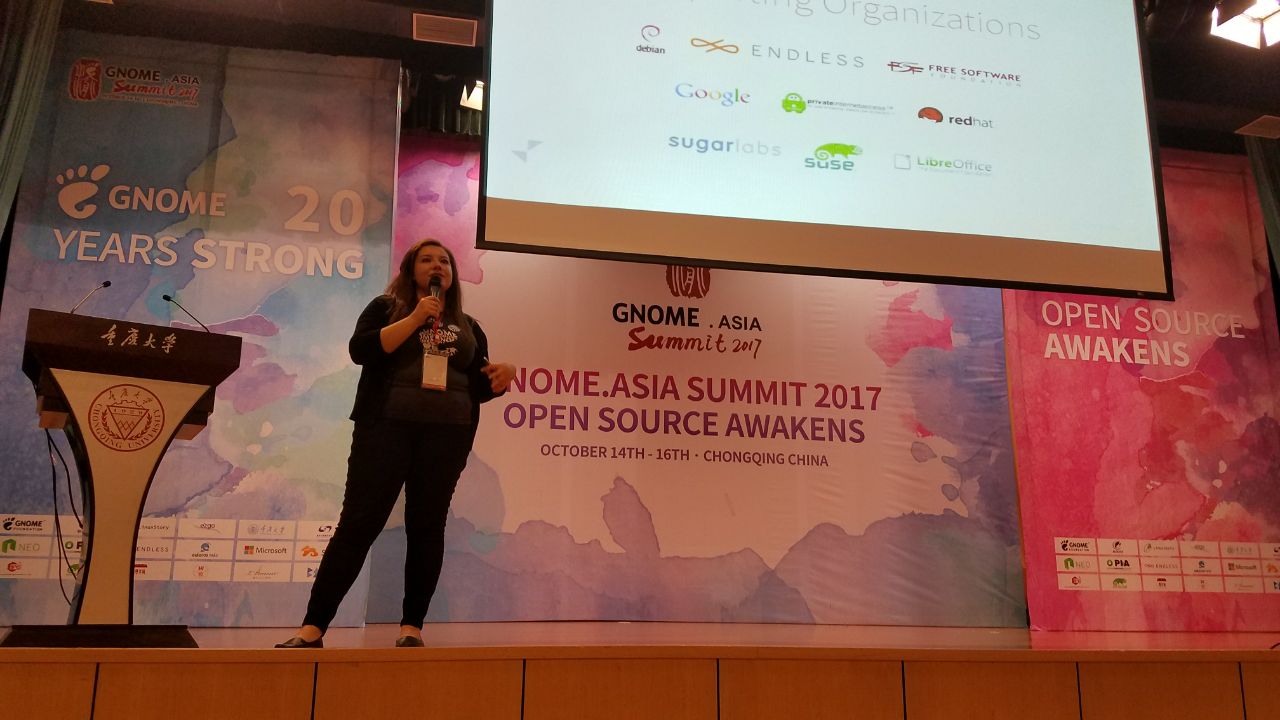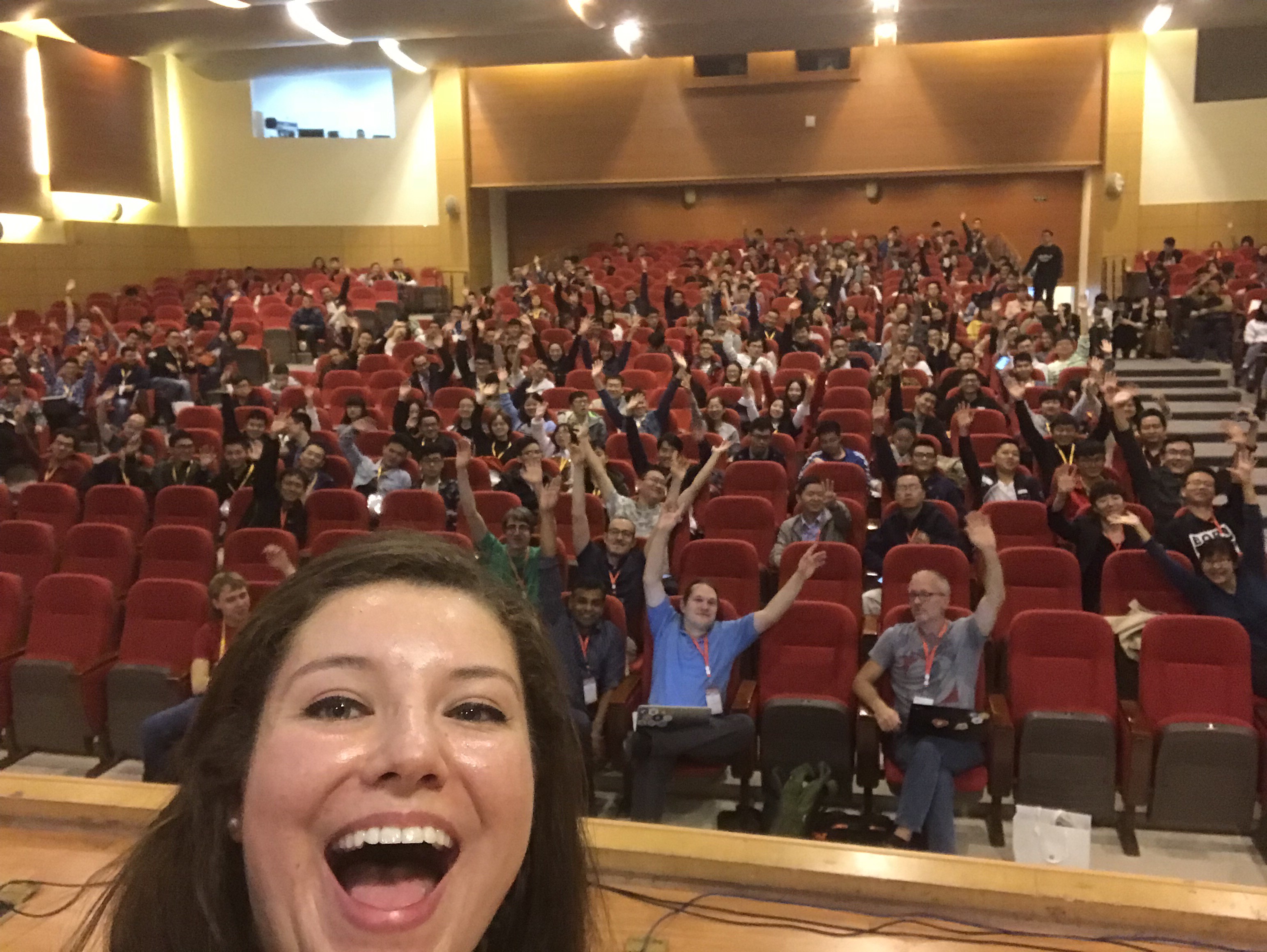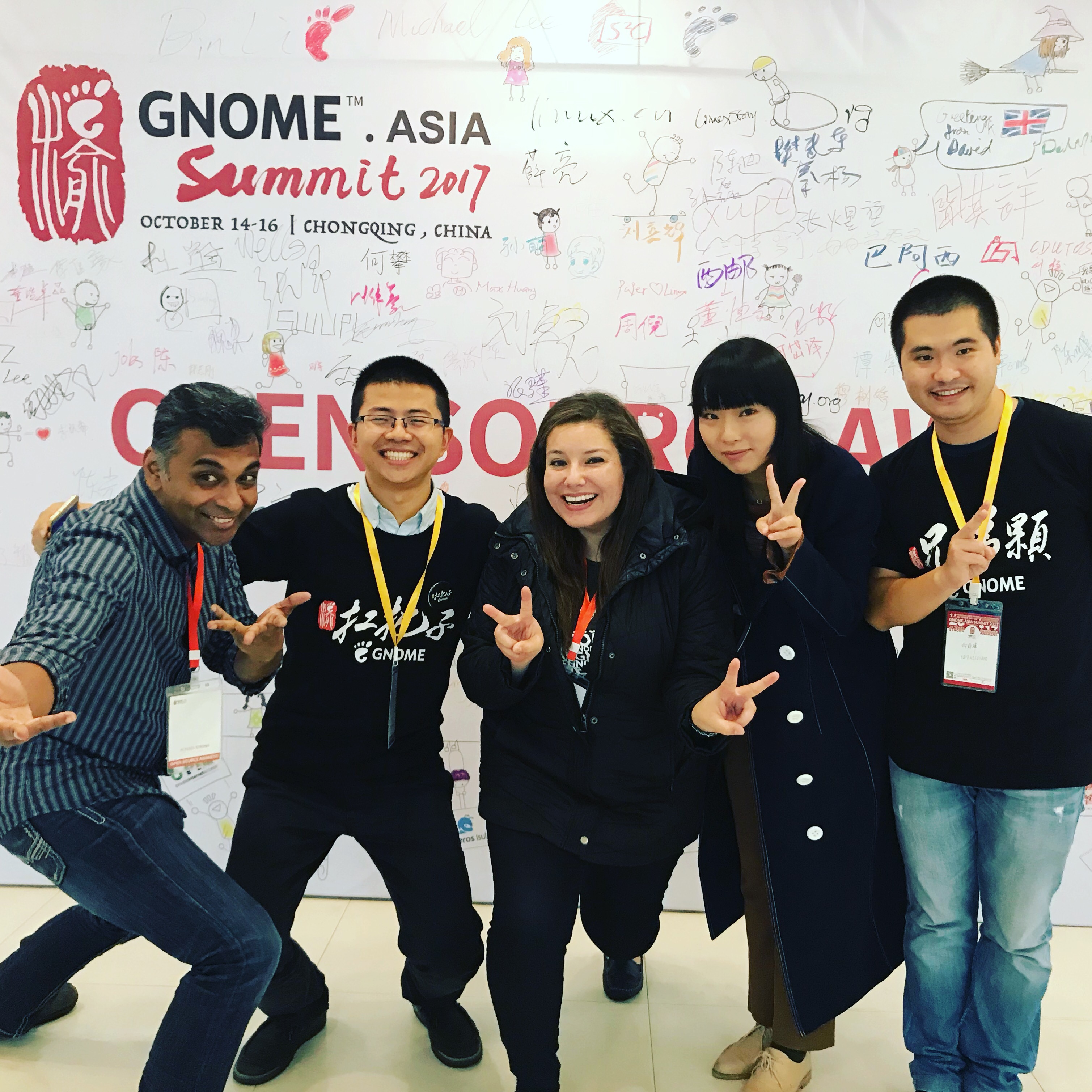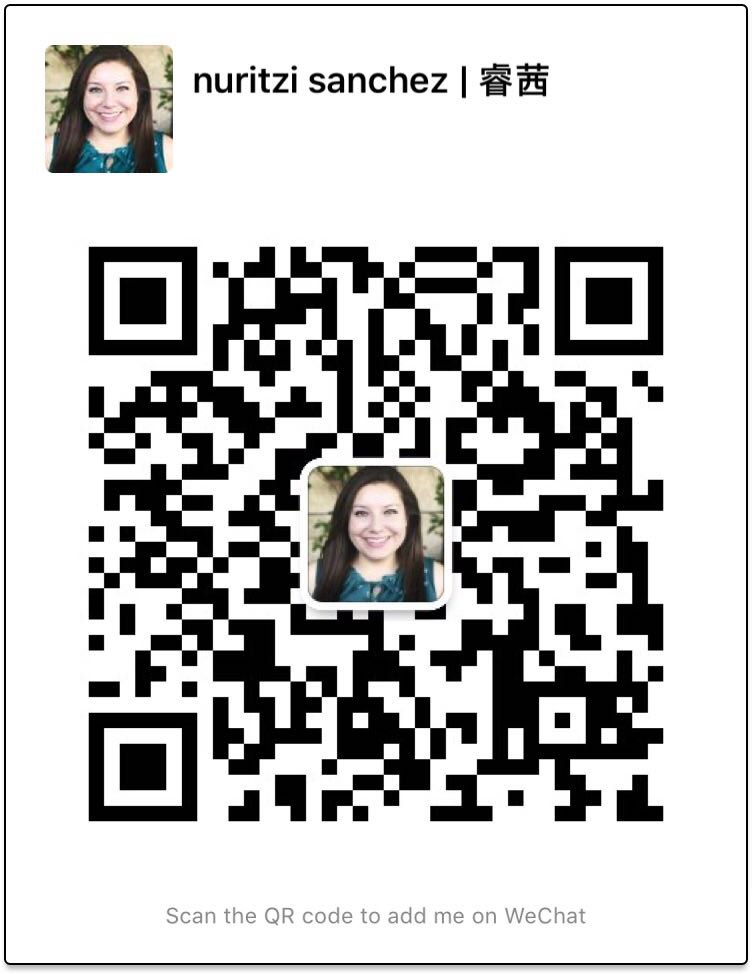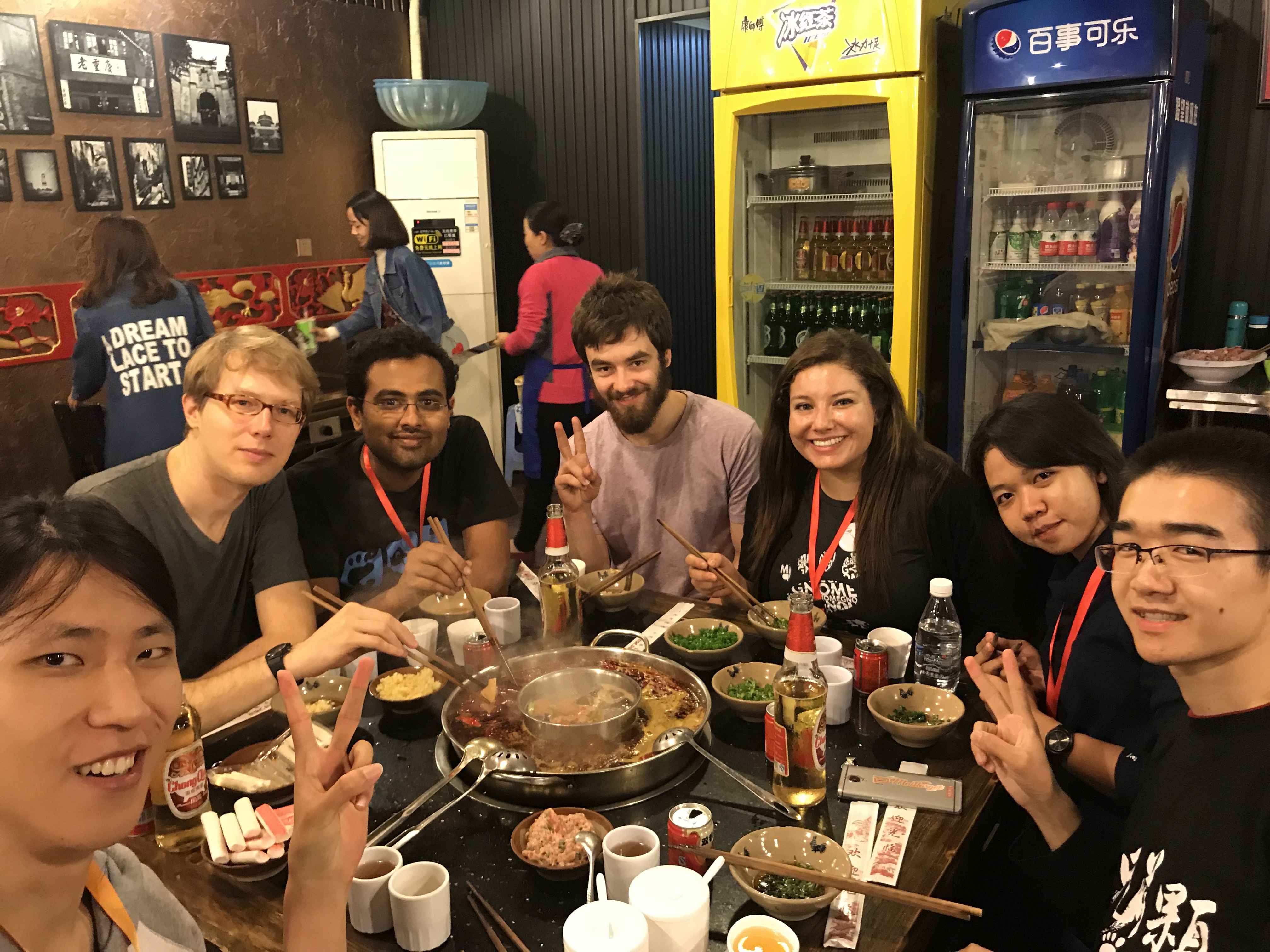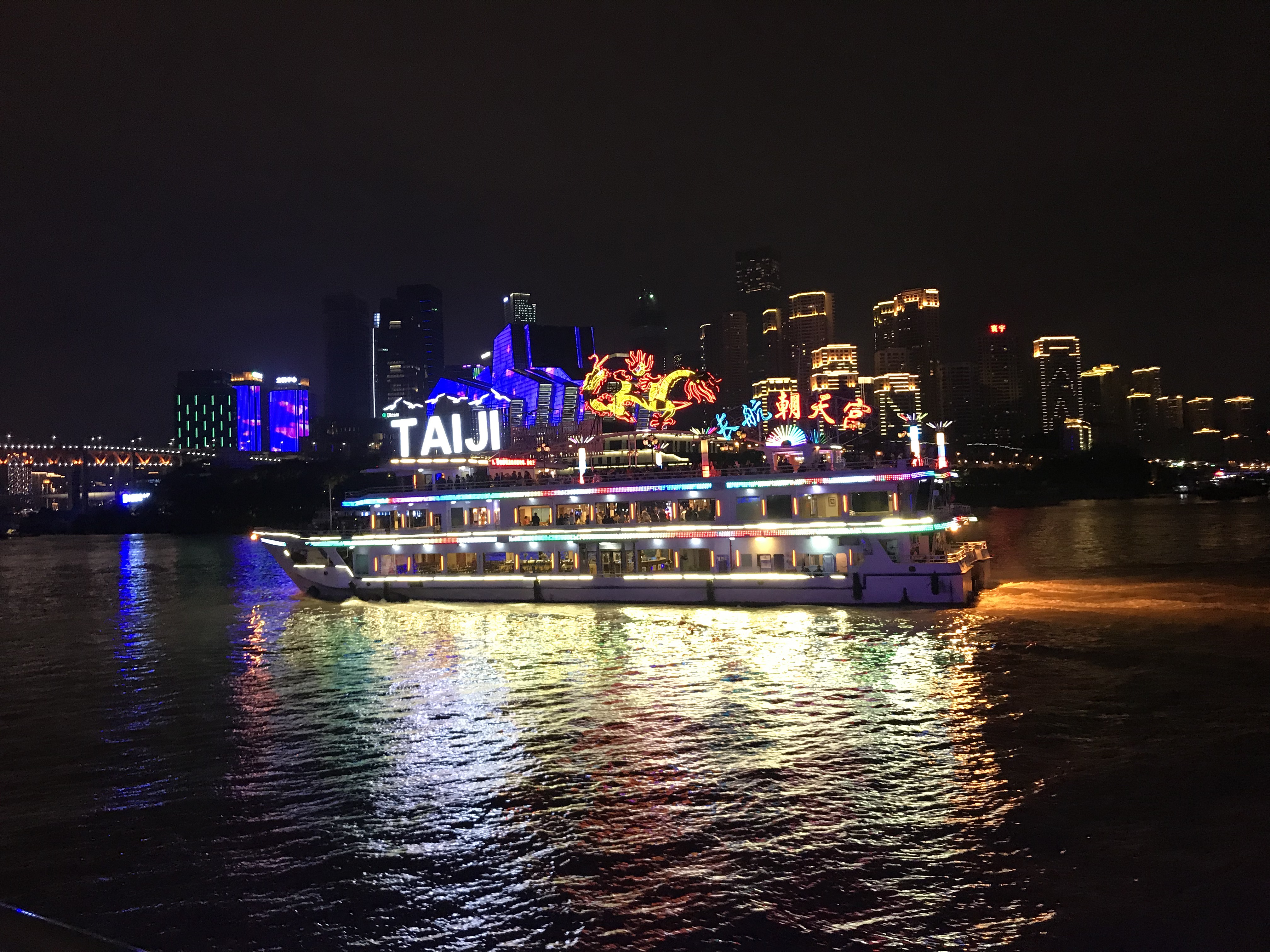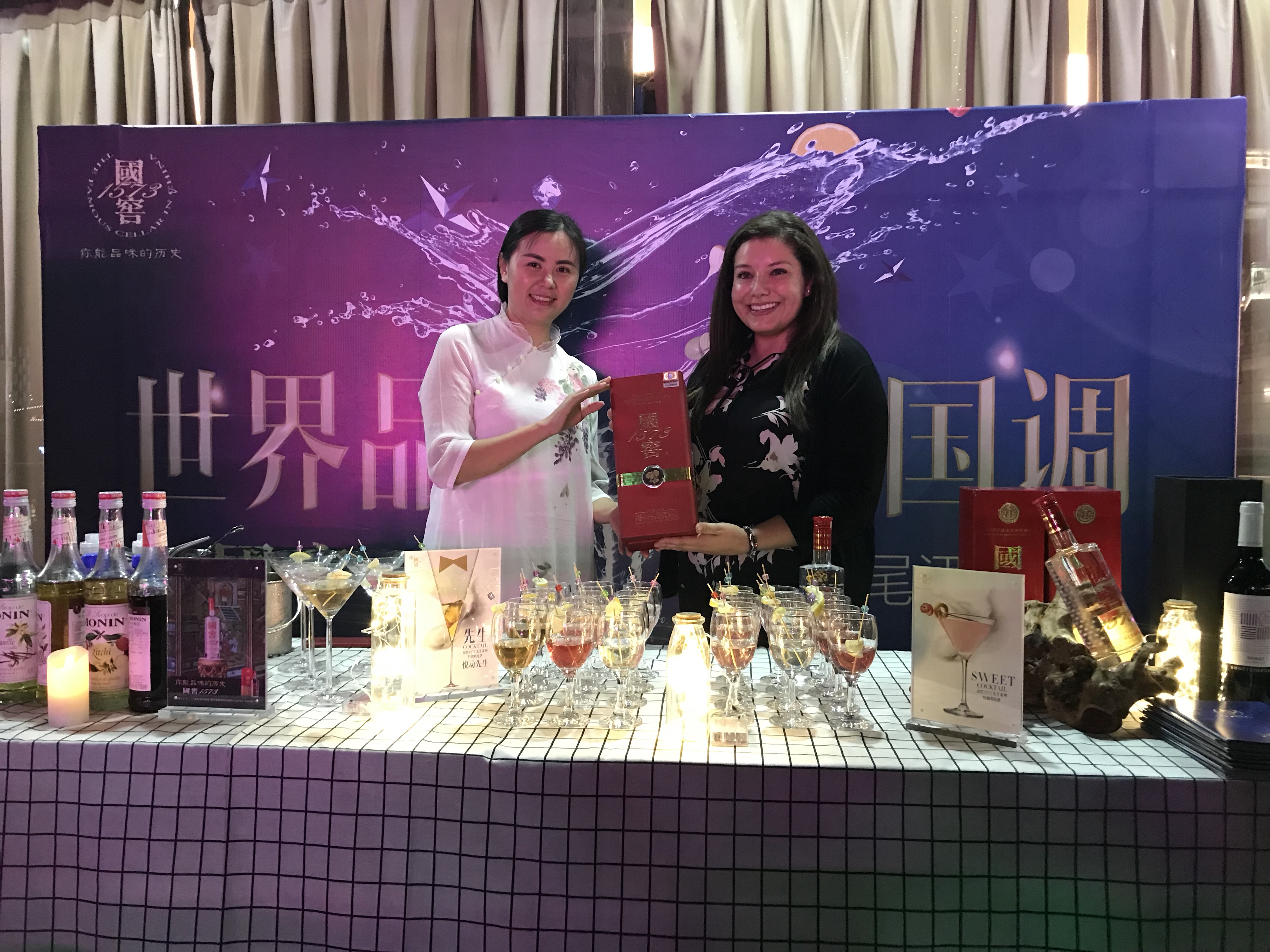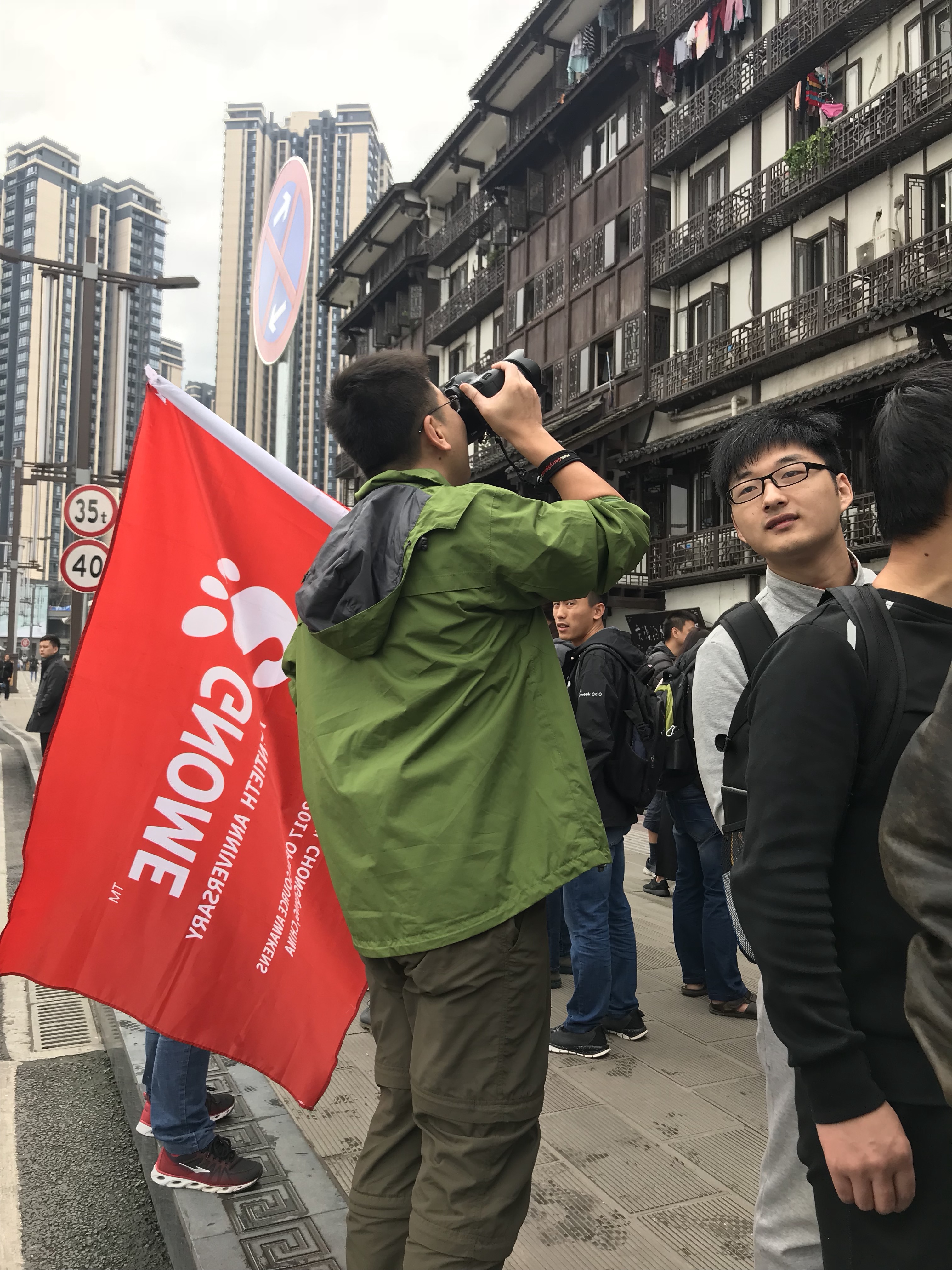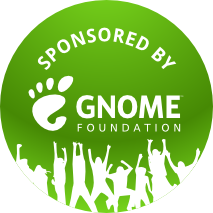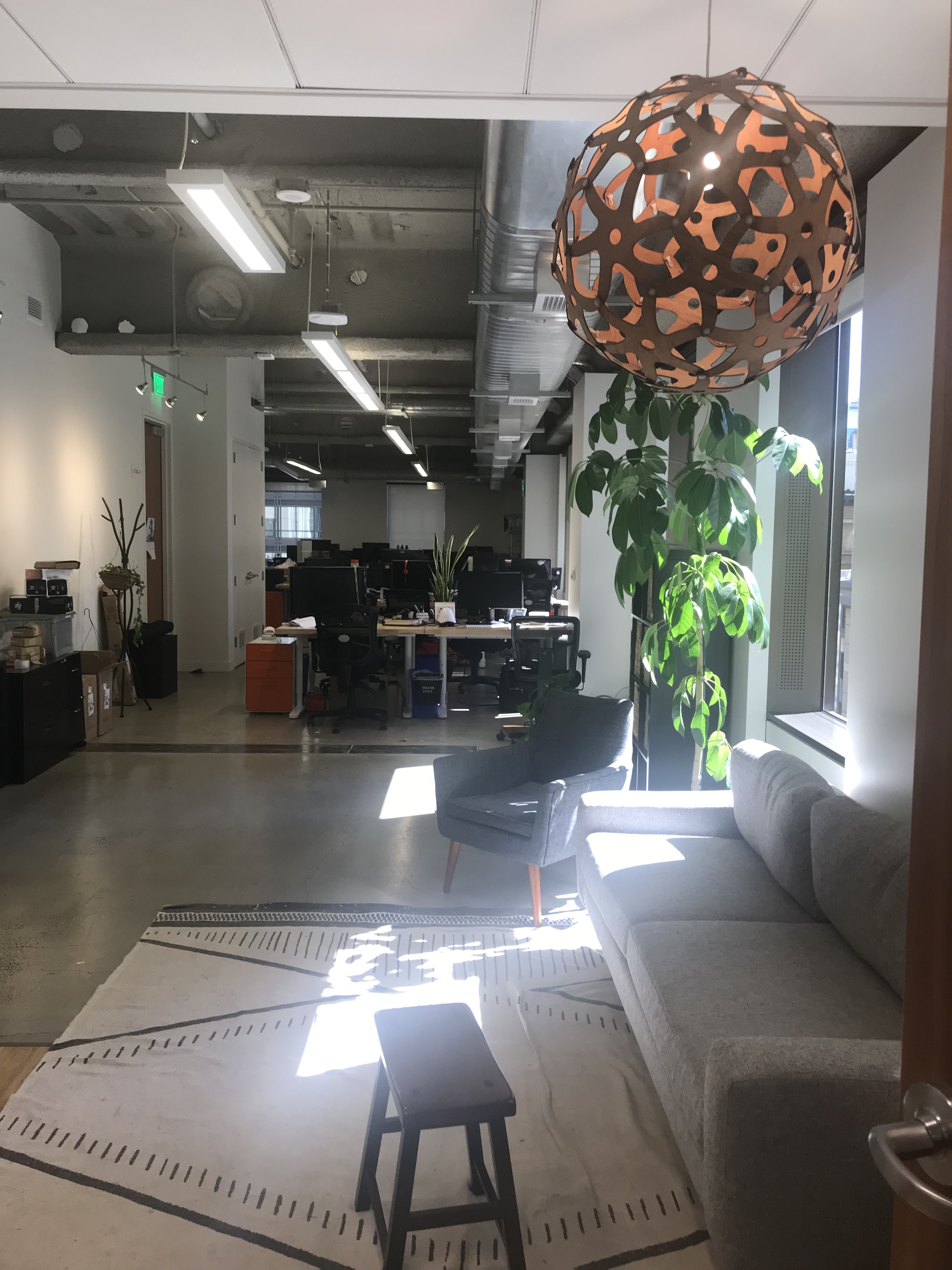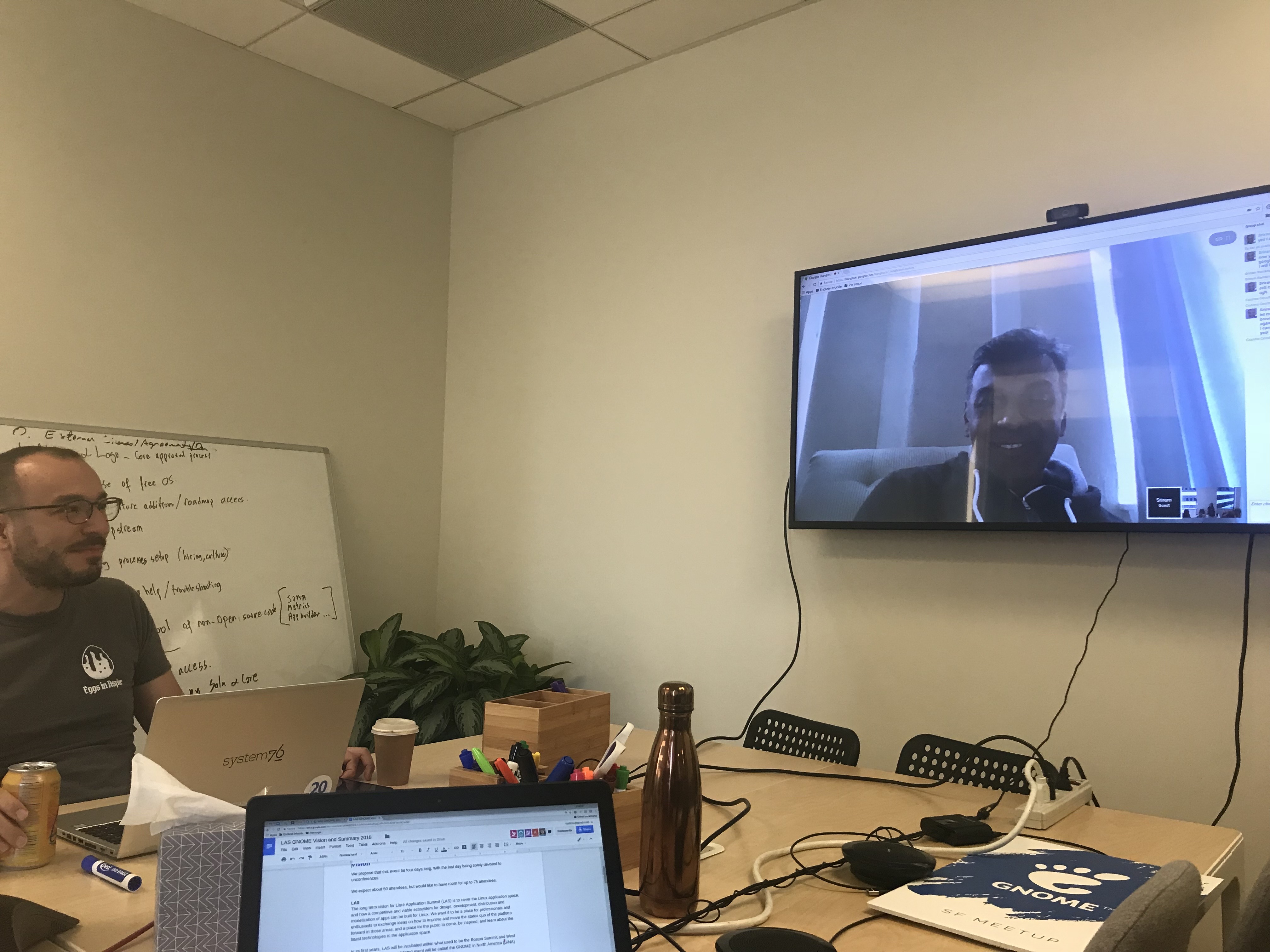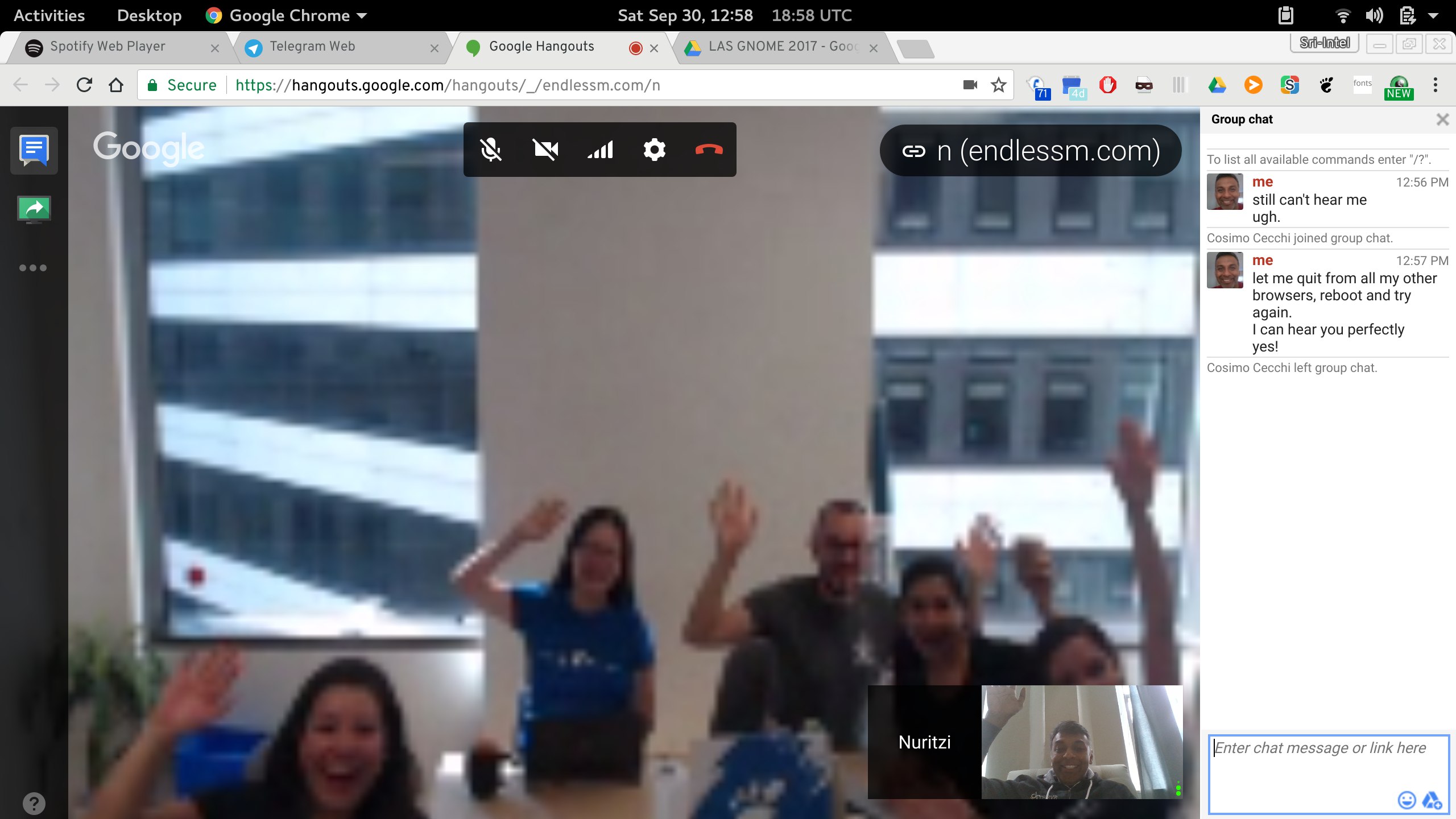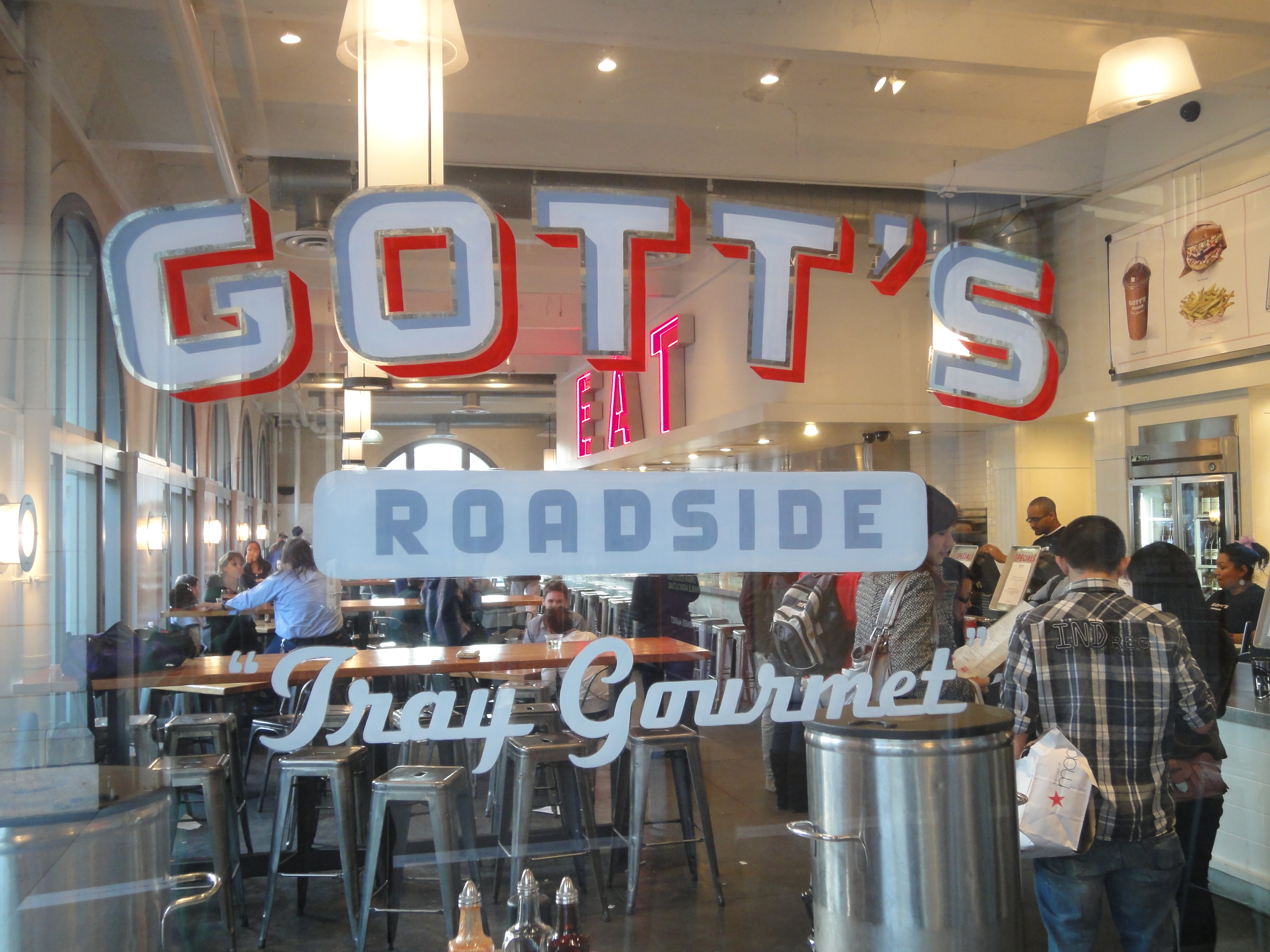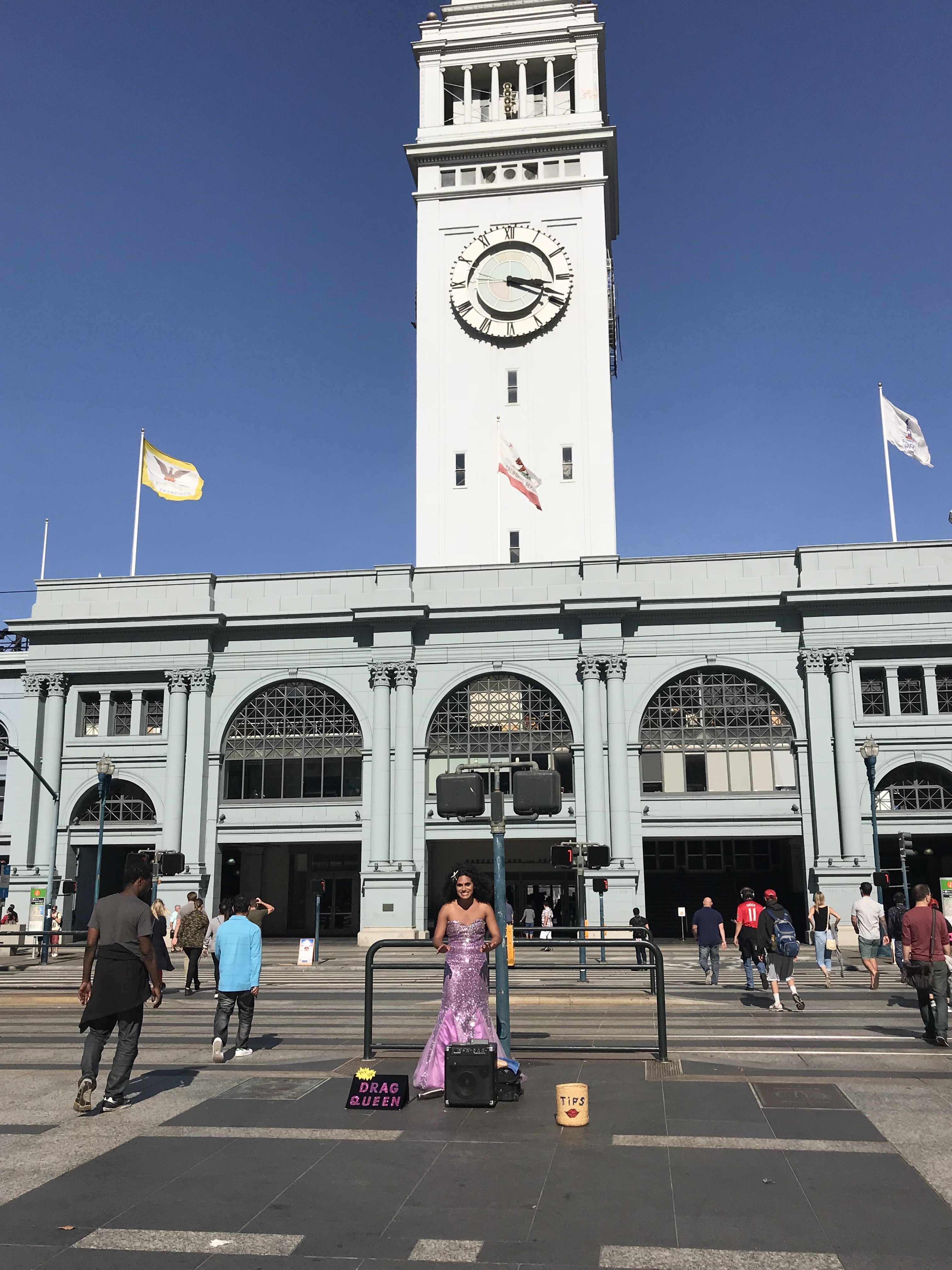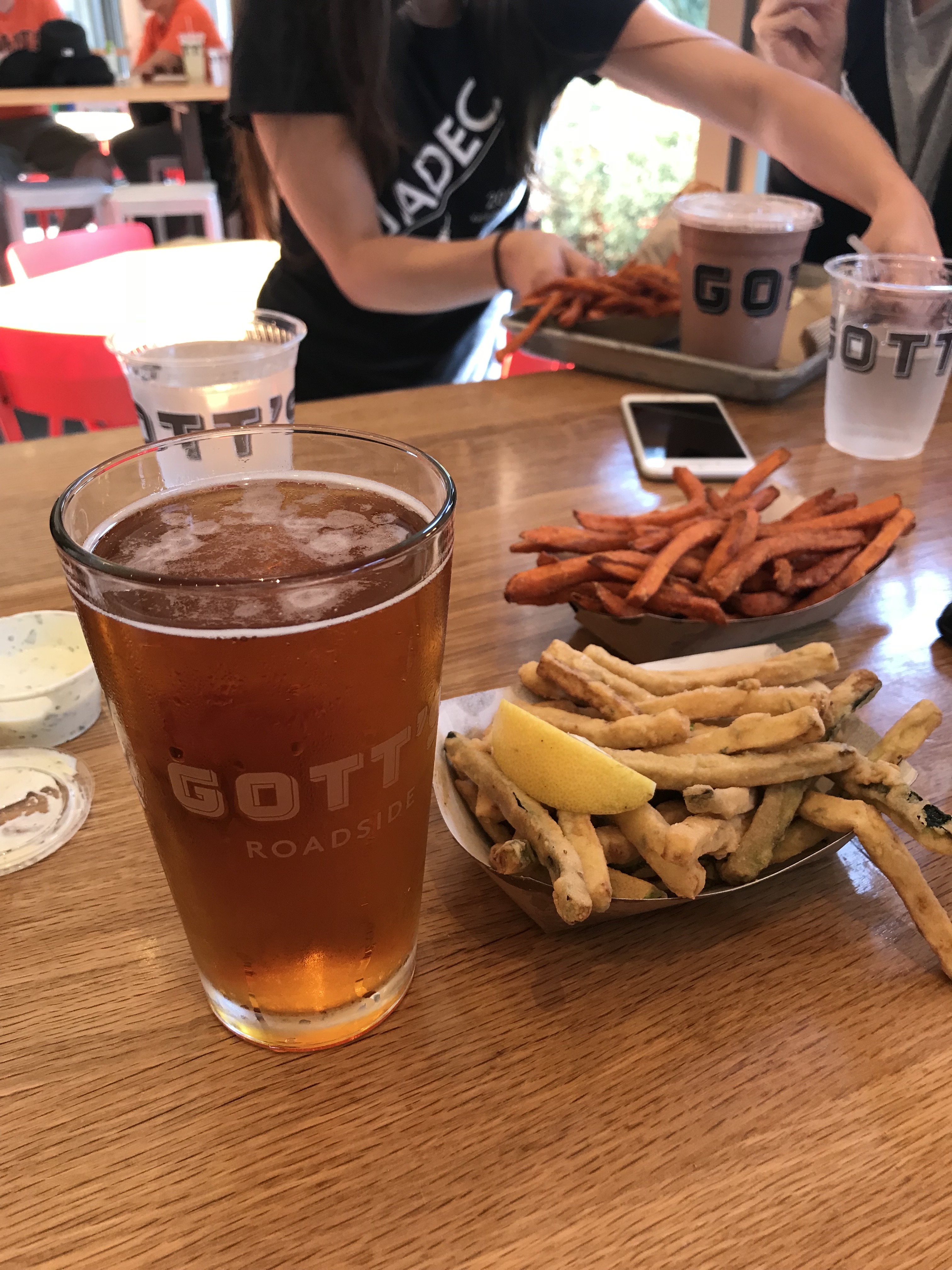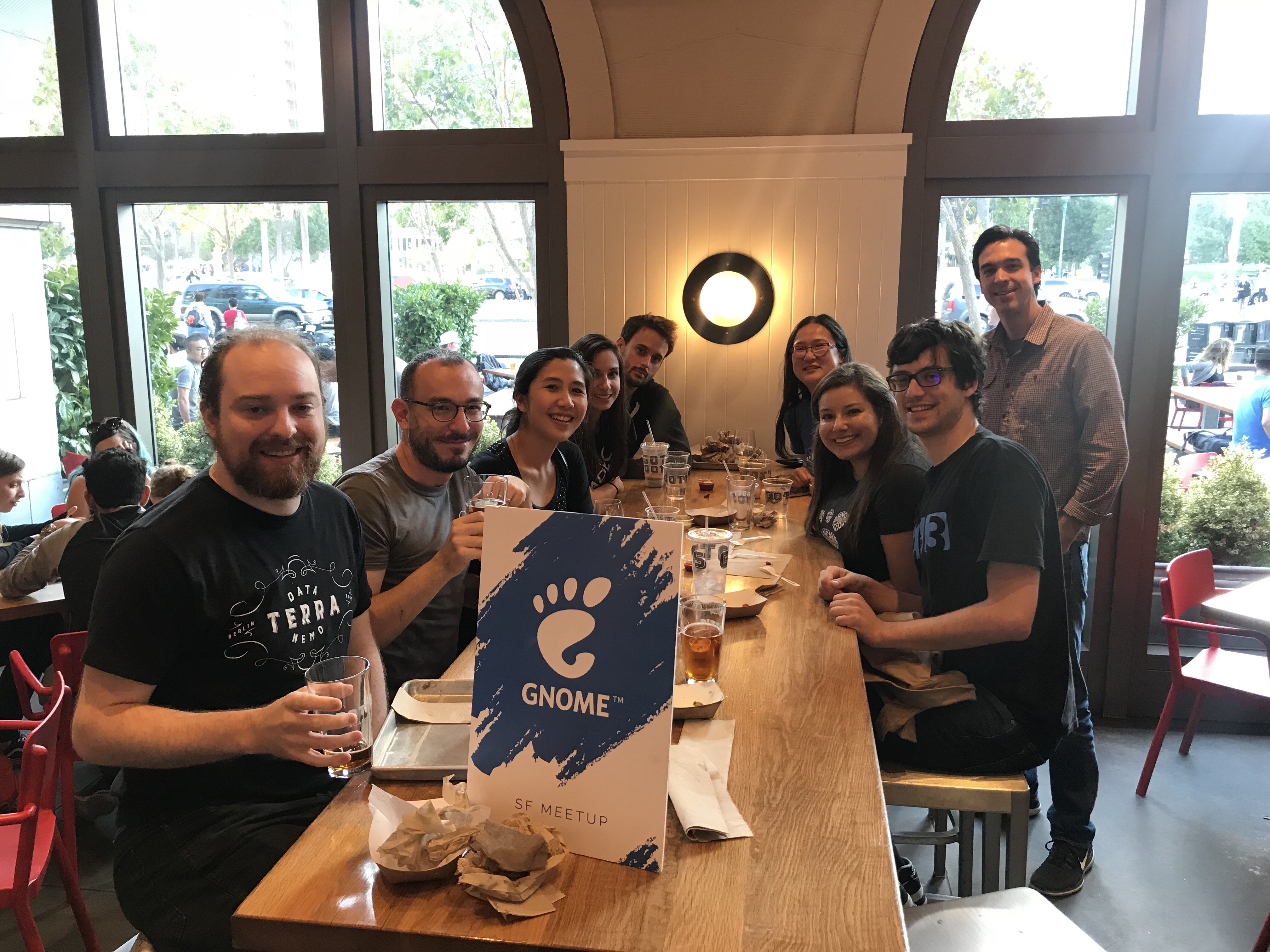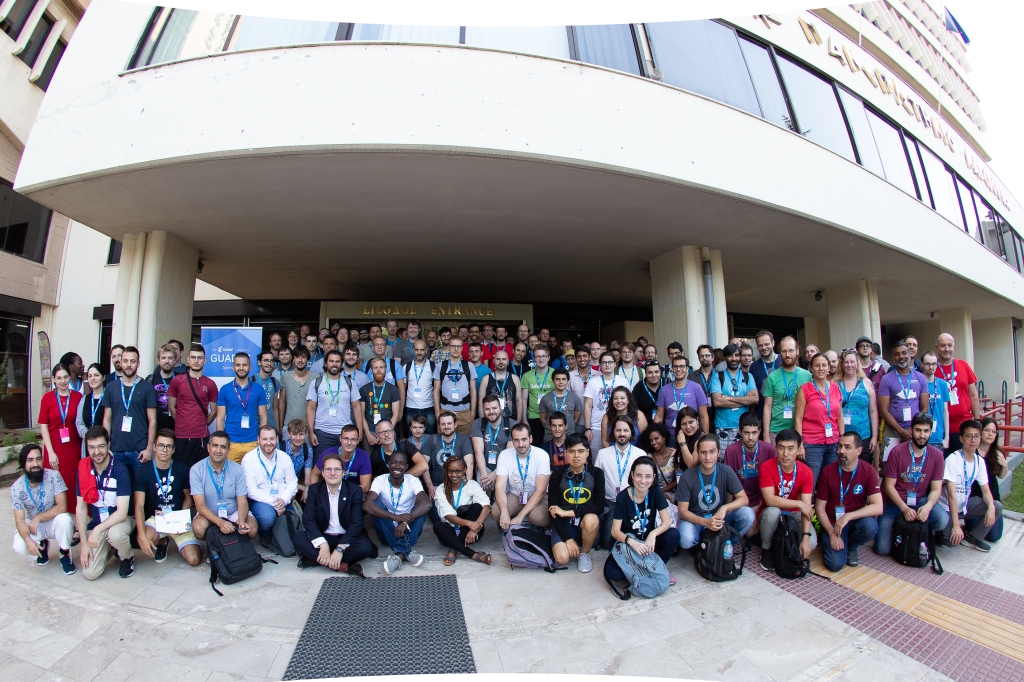
This is the second and final post in my GUADEC 2019 blog series 🙂 If you didn’t see my first post about GUADEC 2019’s board meeting, take a quick look.
This year, I signed up to be a volunteer at GUADEC, and this meant that I wasn’t able to see as many of the talks as other years.
This post will be focused on what I did as a volunteer, a bit about the conference itself, and the BoF sessions at the end.
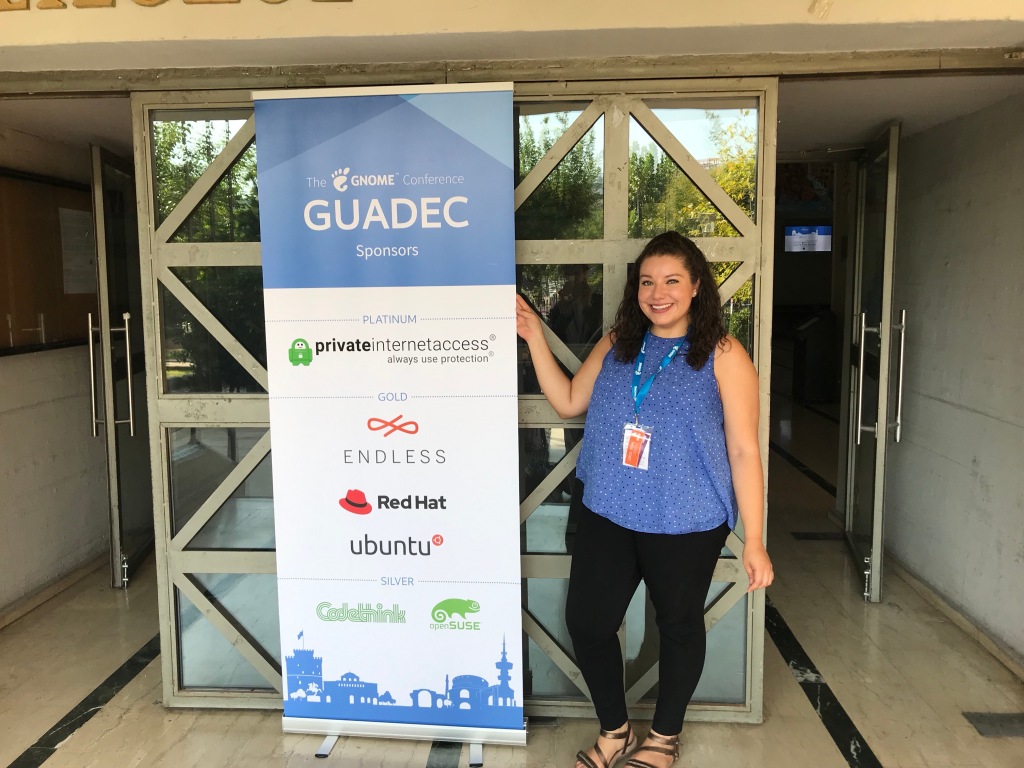
Inclusivity at GUADEC
My personal goal for volunteering this year was creating a welcoming experience. I really wanted to help make GUADEC feel inclusive, so that newcomers and oldcomers alike felt like they were welcome and able to fully participate.
Some Context
One of the things I championed while on GNOME’s Board of Directors was for the GNOME Foundation to explicitly say that one of its goals was to create a diverse community, so that we could prioritize it and justify investing resources into achieving this. Philip and I worked hard to change the travel policy, for example, before I left office this year in order to help increase diversity at GNOME.
I commend Neil on making sure that there is gender diversity among staff, because it matters. We need diverse perspectives in leadership roles, and having gender diversity is a step towards becoming a stronger foundation. There are of course many things that factor into being a diverse community, and gender is only one of them. I encourage the Foundation to keep being thoughtful in how we continue to grow our community.
When I first started the Inclusion and Diversity work group at GNOME, my goal was to first focus on creating an inclusive environment at GUADEC 2019. The thought was that by focusing on our flagship conference, and fostering diversity there, it could spill over into other conferences that GNOME ran later in the year and continue to multiply in online spaces as well.
I thought this was a priority because GUADEC is our flagship conference and events have great potential to attract new contributors.
The need for a group that focuses on Inclusion and Diversity is important. For example, many people commented on the fact that we have an all male Board this year, since Kat and I both decided not to run again (for me, it’s a matter of not having enough time in the upcoming year. I really loved my time on the Board and would definitely consider running for office in the future). If we don’t purposefully put thought and energy into changing things like this, it won’t happen.
The How
The work on the inclusion goal started well beyond the beginning of GUADEC.
As mentioned, I created the Inclusion and Diversity working group with Kristi and Molly, and then we expanded to Gaurav, Stella, Sigu and Rhonda — and now have even more participants.
We wanted to focus on two things at GUADEC:
- Make it a great environment for newcomers.
- Make it welcoming to womxn and minorities.
While there is some overlap, with these two groups in mind, we were better able to think through the challenges facing each.
For those of you familiar with marketing practices, this is similar to creating customer personas 🙂
Although we didn’t go through the entire exercise of coming up with customer personas, it may be something we try in future years. If anyone with a marketing background wants to join us and help with that, please message me! 🙂
Including Newcomers
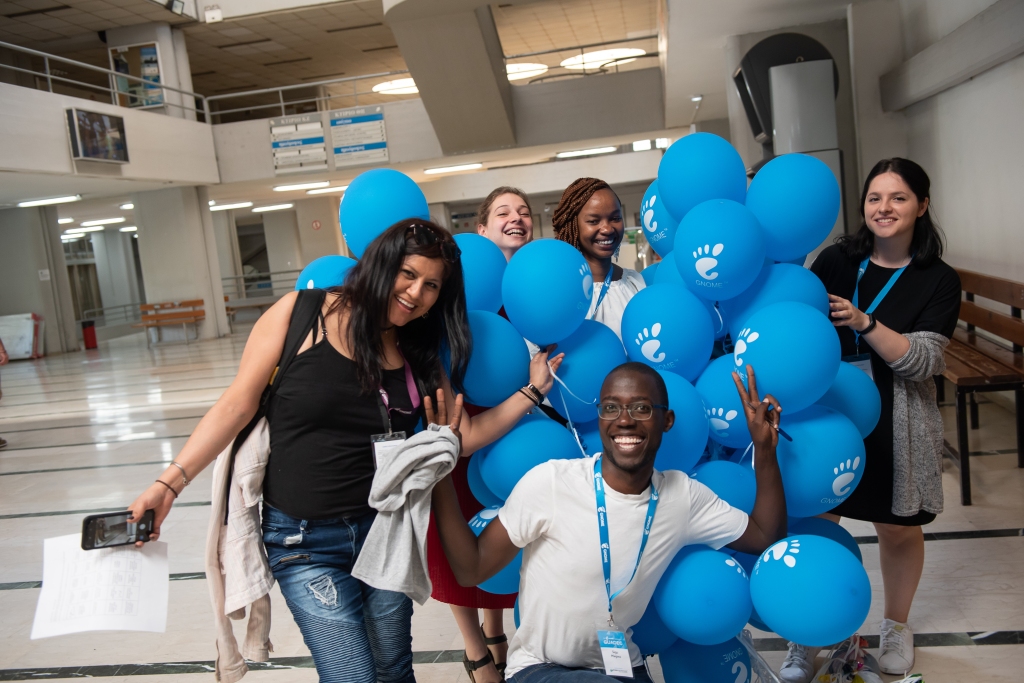
Having an intuitive website
A way to attract newcomers is by making sure you have a great website.
While the GUADEC organizing team did the hard work of putting together an initial website to promote GUADEC 2019, I spent time before the conference looking at it from a newcomer’s perspective and refining it.
The goal was to make sure that all of the relevant information was easy to find and that the website did not assume that viewers had pre-existing knowledge. In addition to imagining that I was a newcomer, and trying to view the website that way, I also asked Stella, Sigu, and Gaurav (some actual newcomers to GUADEC), to go through the website and tell me what was missing or confusing.
We ended up filing a few issues for the website and asking the web team to rearrange the menu so that it was more intuitive. We also ended up creating a page specifically for newcomers, to make them feel extra welcome.
Another thing we paid attention to was the language we used. Was the website content written in a friendly tone? Was it clear and concise? Did we make sure we weren’t assuming knowledge? For example, newcomers may not know what a BoF is or how it works — so it helps to explain this.
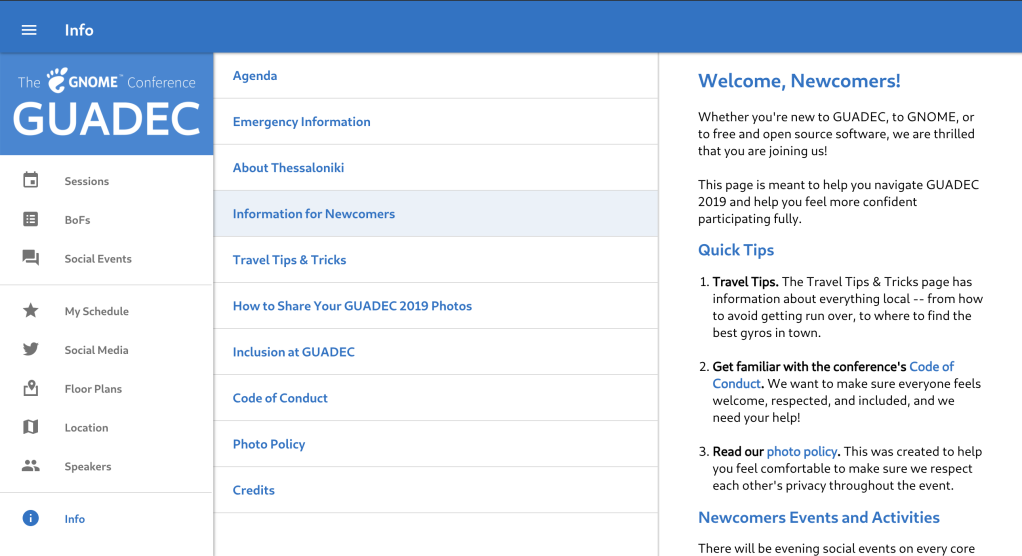
Genuine hospitality and creating tips
I loved that the local organizers added restaurant suggestions, and I wanted to expand upon that. What if someone is traveling to a new country by themselves for the first time? They probably won’t know the language or some of the basics. So, with the help of Esfathios (one of the core local organizers), I created a “Tips and Tricks” page. In that page, we included information about safety and what to do in case of an emergency.
Have any of you used AirBnb before and had a host give you a bunch of local tips?
I don’t know about you, but I always appreciate their putting in extra effort to make me feel welcome. This is a sign of good hospitality, and I think that it should extend to our conferences.
We should strive to be superhosts 🙂
Activities and Icebreakers
I also wanted to plan activities during GUADEC that encouraged oldcomers and newcomers to interact and get to know each other.
I drew upon previous experience planning newcomers things with Julita Inca, Carlos Soriano, and Felipe Borges. This year, Felipe and I were the main ones who planned something for newcomers. Felipe helped organize a pre-registration dinner for newcomers, and I planned a lunch the following day.
Besides that, I also organized a raffle give away to encourage people to mingle throughout the conference. Those who wanted to participate were given a bingo sheet (thanks for helping me create this, Molly!), and they had until the last day of the conference to fill it out. We came up with prompts that would make it so that people were encouraged to meet newcomers and oldcomers to the GNOME community. We held the raffle at the end of the Annual General Meeting (AGM), as a way to also encourage everyone to come. Many prizes were given out and it was a lot of fun!
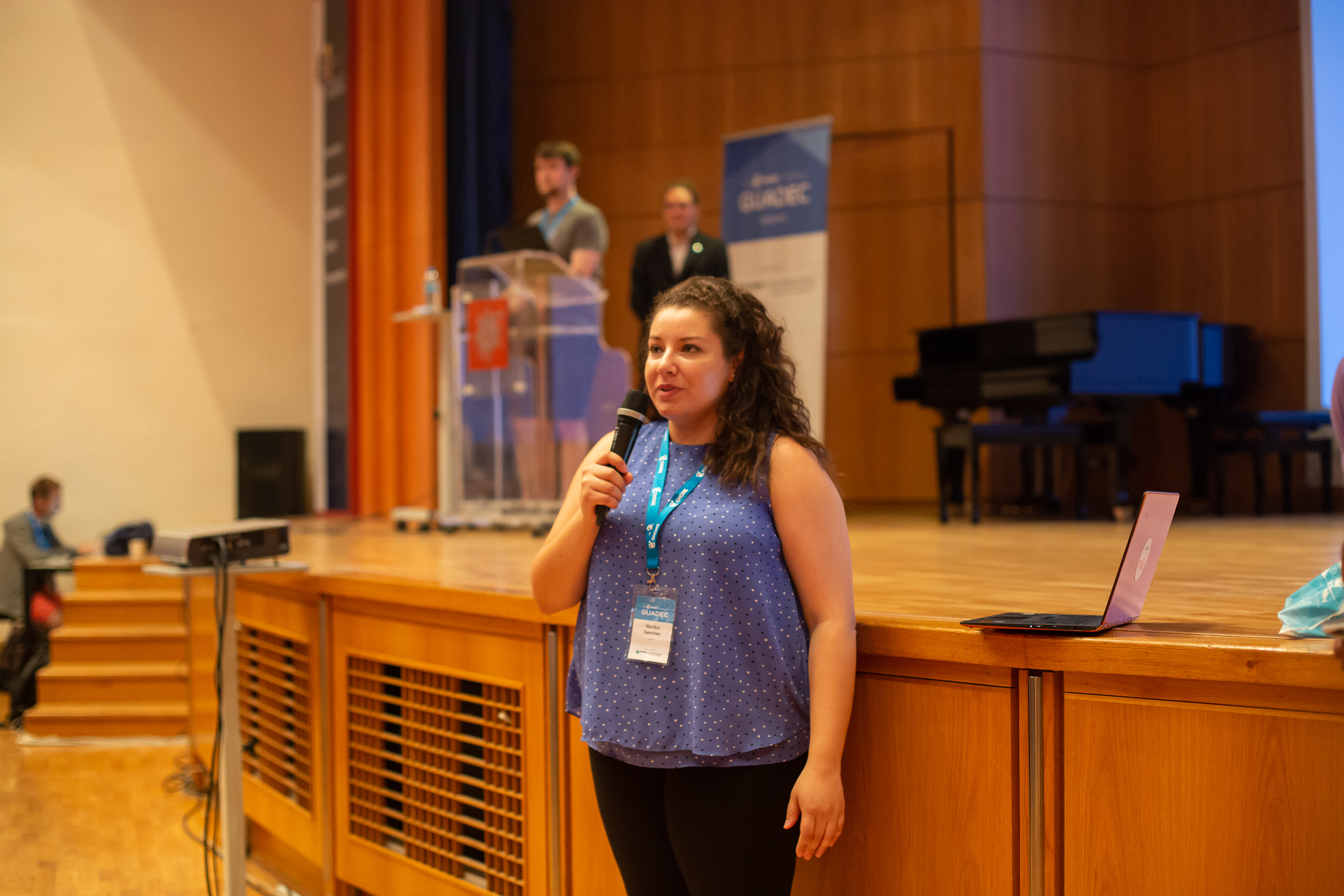
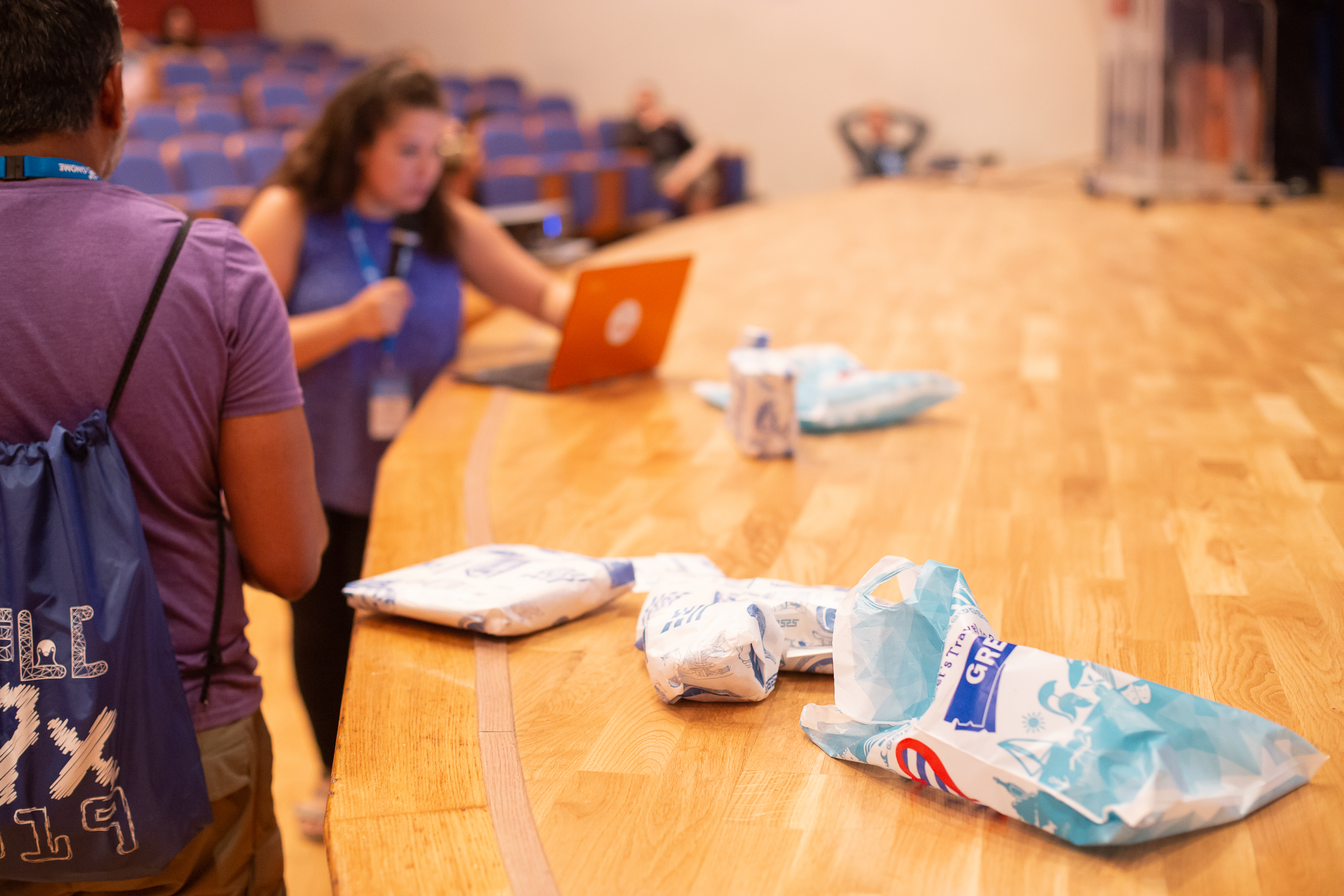
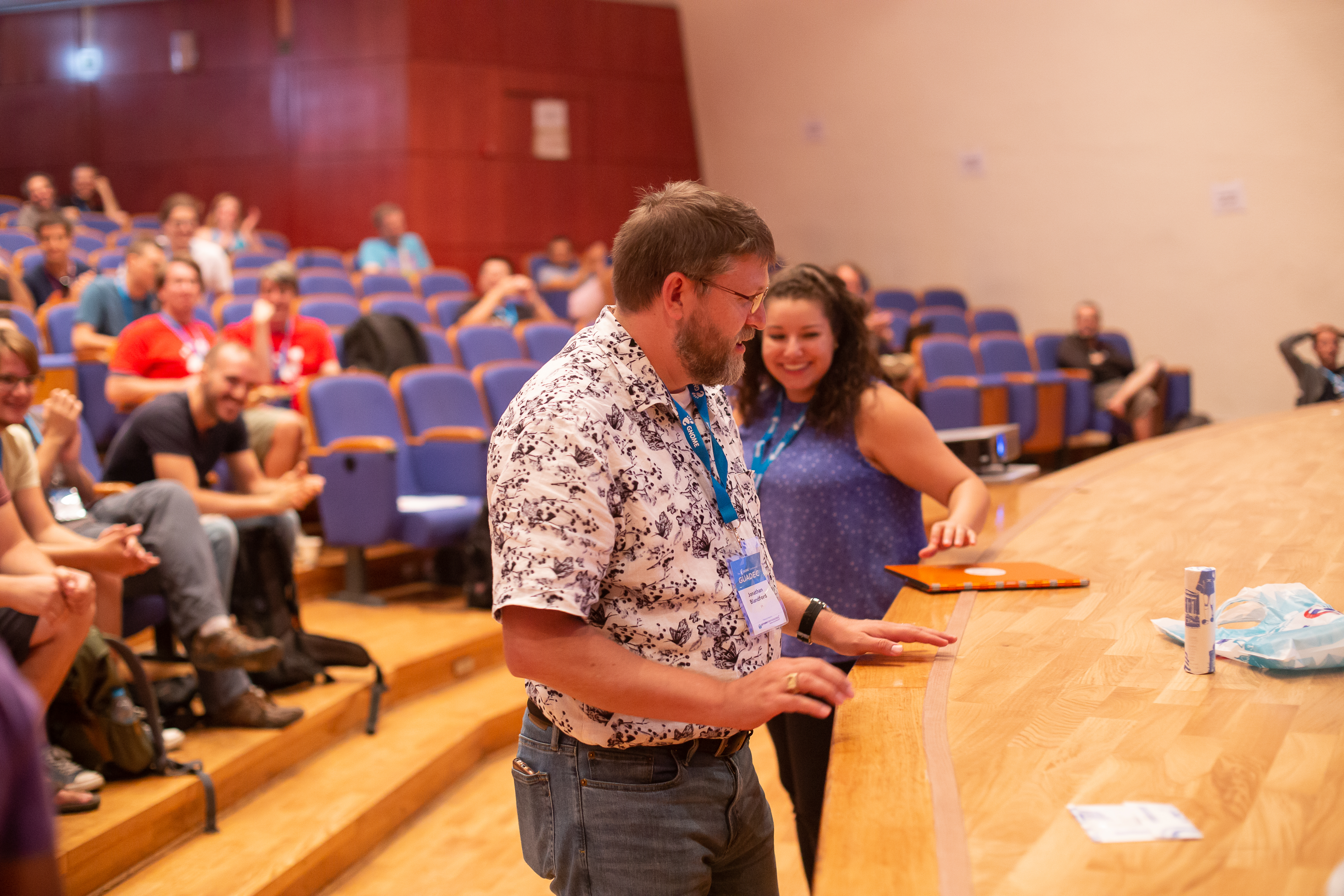
We received great feedback from the bingo and raffle. People told us that the activity allowed them to meet and talk to people they wouldn’t have otherwise, and they really enjoyed it!
Since creating new social connections is a key value proposition of any conference, I think it’s really important to have activities that encourage social interactions and which break down barriers of people interacting with others.
Including Womxn and Minorities
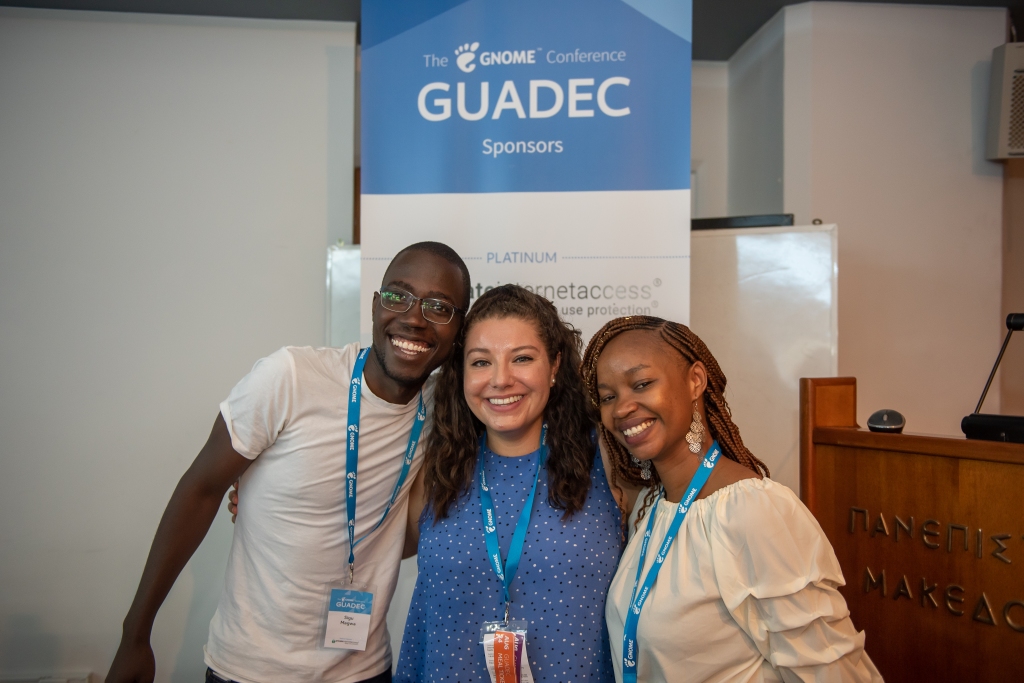
Creating welcoming environments for womxn and minorities at open source events is a challenge that many people are trying to solve. Here are some things we did to try to make GUADEC 2019 more welcoming for this group of attendees.
Creating Intentional Spaces
Two small things that we did to create an intentionally welcoming space was to have pronoun stickers for people to put on their badges, and also to designate gender neutral bathrooms.
While these may seem like small things, we did not have them at previous GUADECs, and we decided to implement these things based on feedback we received for how to make our events more inclusive.
We also created a statement of intentionality on the website, to show attendees that we care about inclusivity at GNOME. I know that I personally notice things like that when I browse organizations’ websites, and I think it’s an important thing to include.
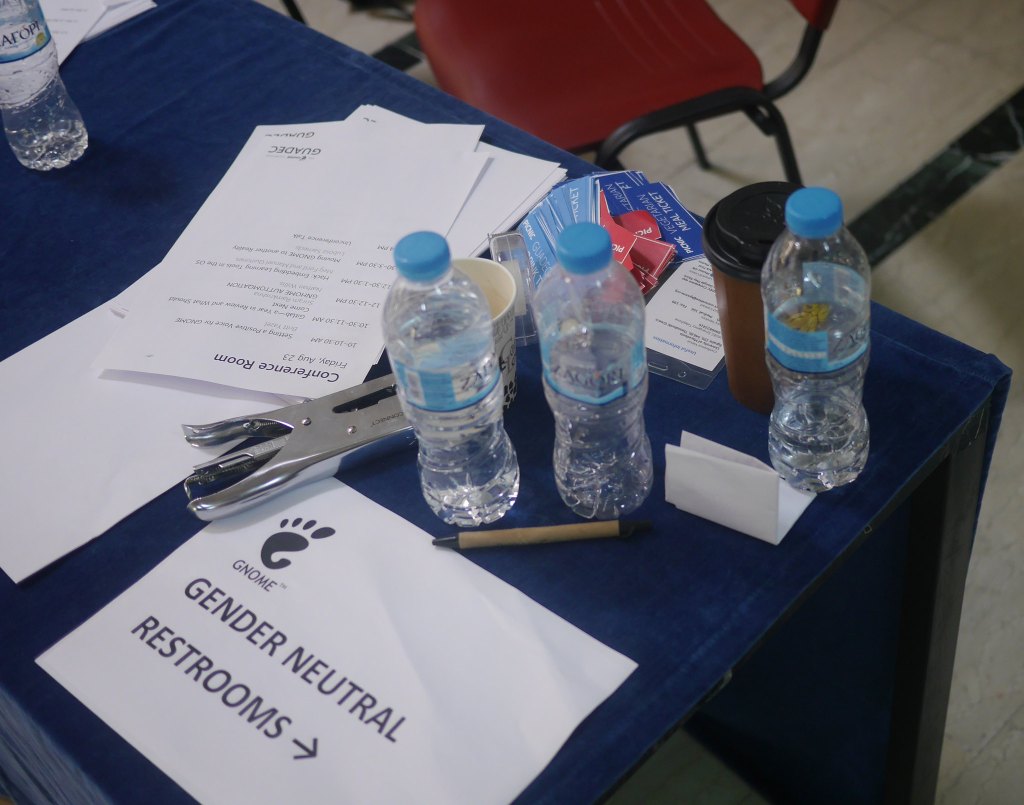
Including Relevant Content
During GUADEC 2019, we decided to organize some workshops that were part of a community track and which encouraged topics around inclusion and diversity:
I think it’s really important to not only have a variety of different technical talks (community building, design, development, usability, marketing, commerce, etc), at conferences like GUADEC, but we should strive to provide workshops that help build participants’ soft skills.
In the future, I’d love to see workshops on things like communication essentials, giving feedback, having difficult conversations, microaggressions, being an ally, etc.
Holding Relevant Events
This year we held the annual Womxn’s Dinner on the pre-registration day.
While I think it was good to have an event like this, it was, unfortunately, the only event of its kind that we had. Not all attendees made it to Greece the day before the conference started, and I think it would be great to provide multiple opportunities for womxn to meet and connect with each other throughout the conference.
Talks & Conference Days
As I mentioned before, I was unable to attend many talks because I was volunteering. However, there were a few talks that I saw, and I really enjoyed them!
Here are a few of the talks that I saw and I recommend watching:
- Renata Gegaj- Introducing User Research to non-UXers
- Sigu Magwa and StellaMaris Njage – Building the GNOME Community in Africa. This was was not recorded, unfortunately. They gave pointers on how to engage newcomers to GNOME in Africa, and gave examples of what worked and didn’t work in their own experience building other communities in their home country of Kenya.
- Allan Day – GNOME UX: Strategies and Tactics
- Rob McQueen- Is the Linux Desktop Really Dead?
Some other highlights from the conference:
- Seeing Carlos Garnacho get awarded the Pants Award! He’s been a rockstar around GNOME for many years now, so it was great to see him get this award!
- Celebrating Caroline’s incredible contributions this year (she’s our star graphic designer and has helped with a LOT of things involving design and branding.
- Presenting some of the Engagement team’s accomplishments this year at the Annual General Meting (AGM) with Britt.
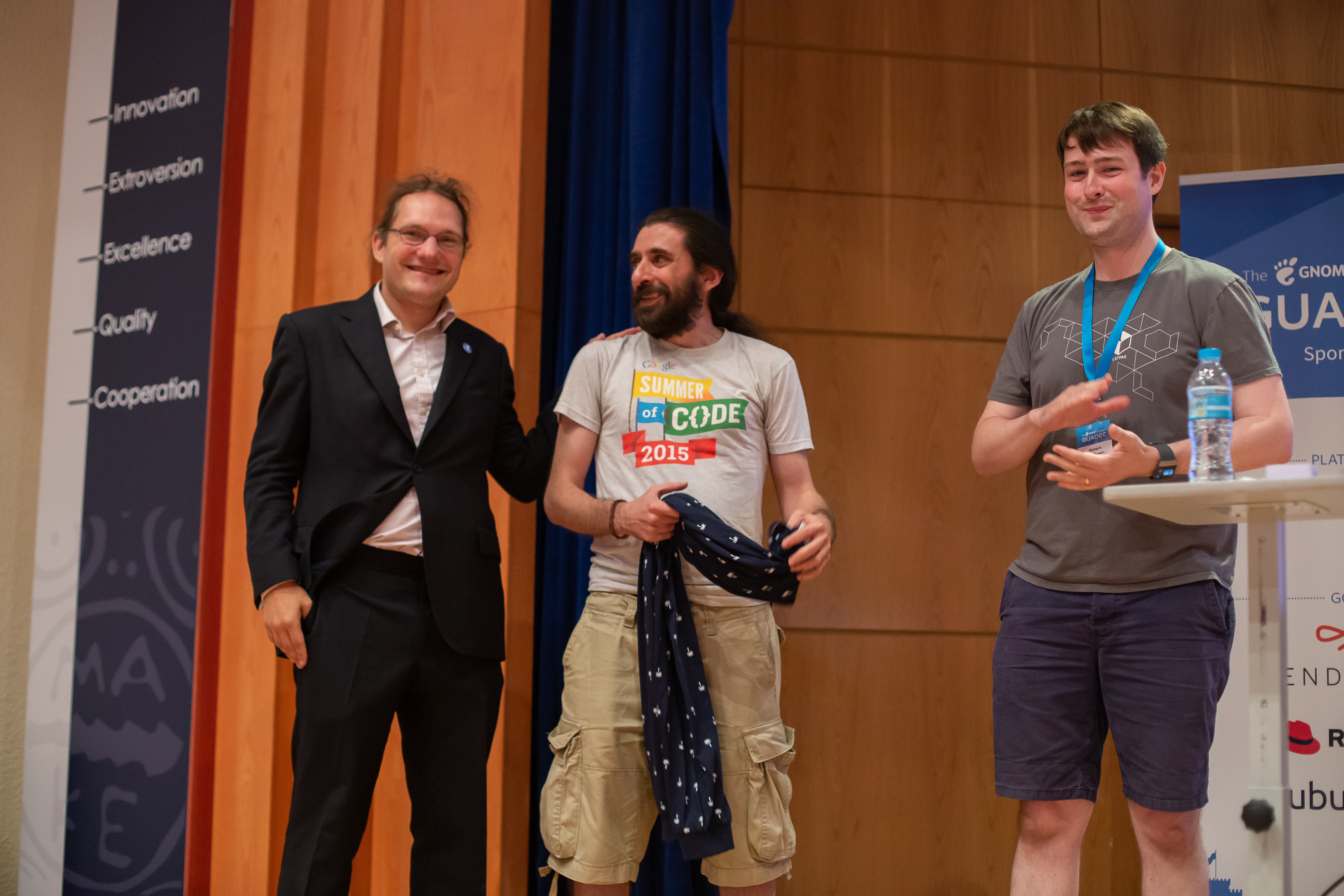
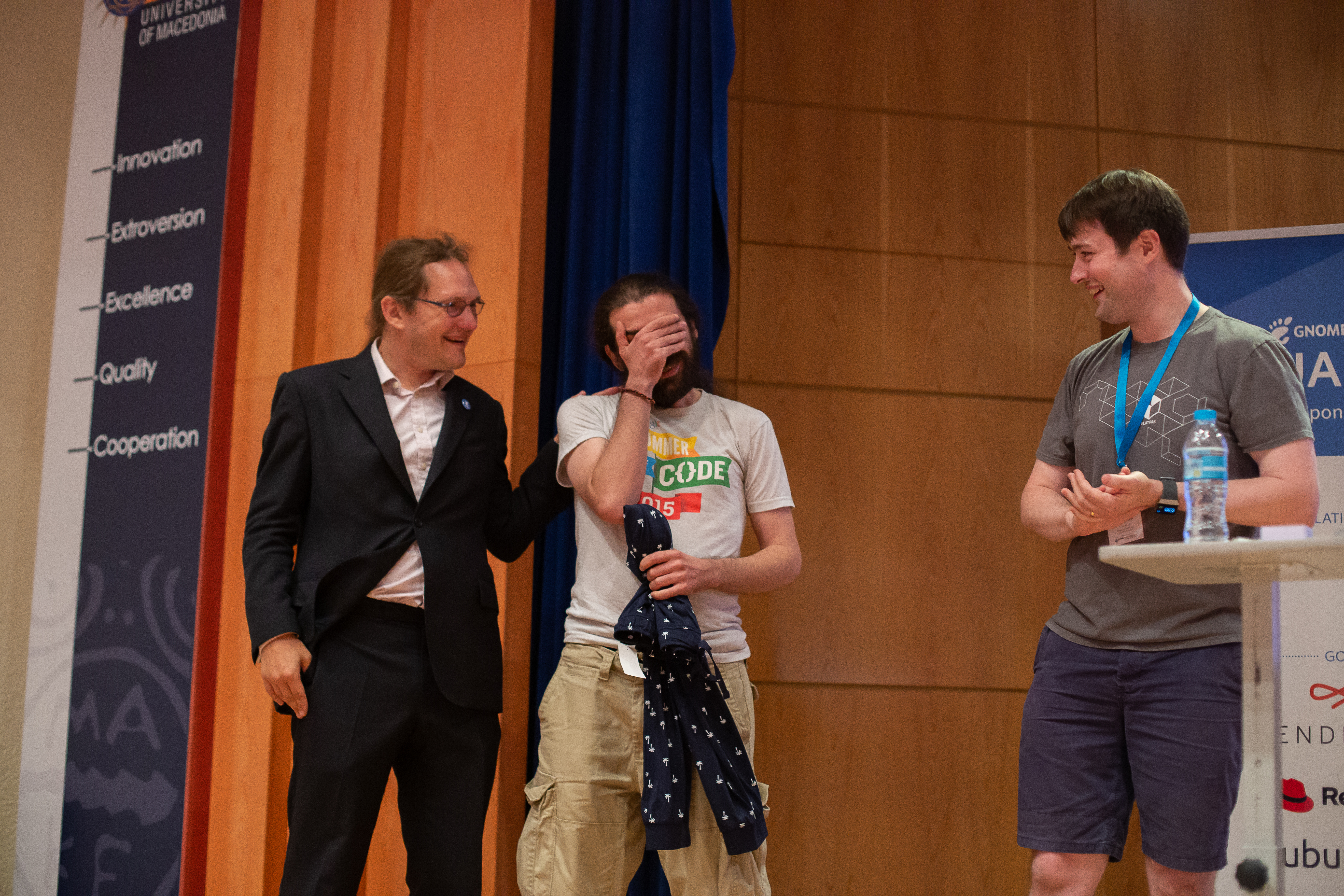
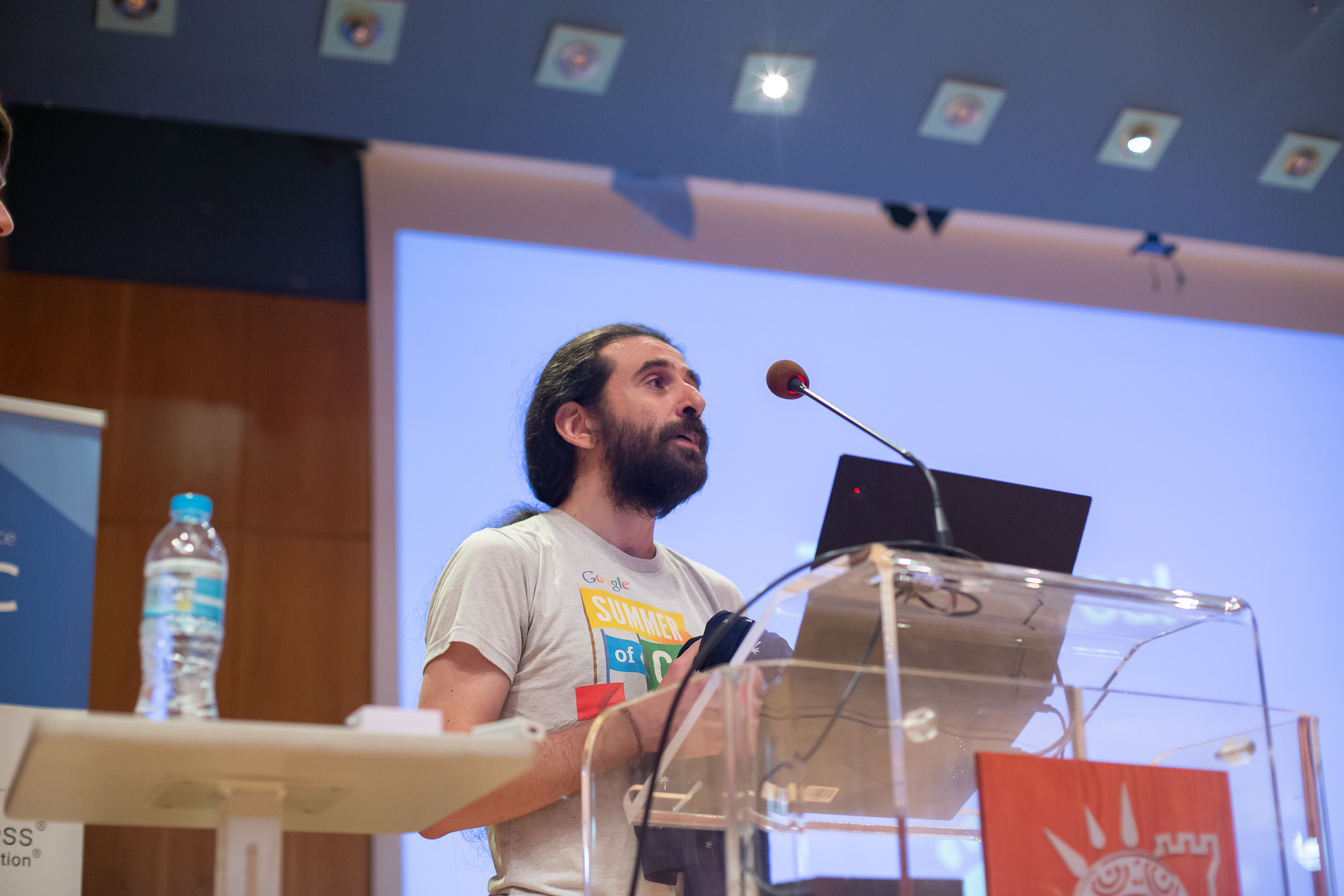
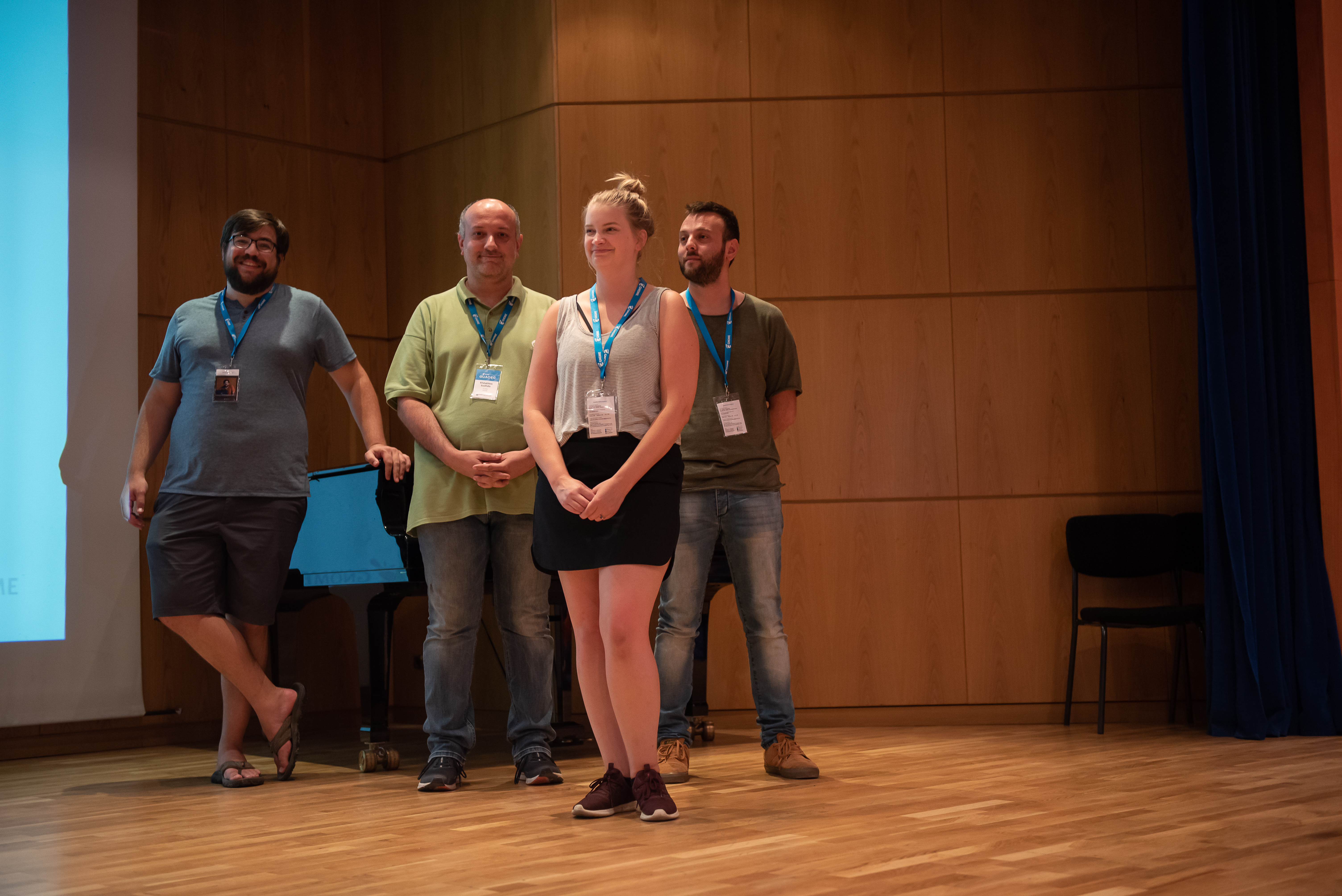
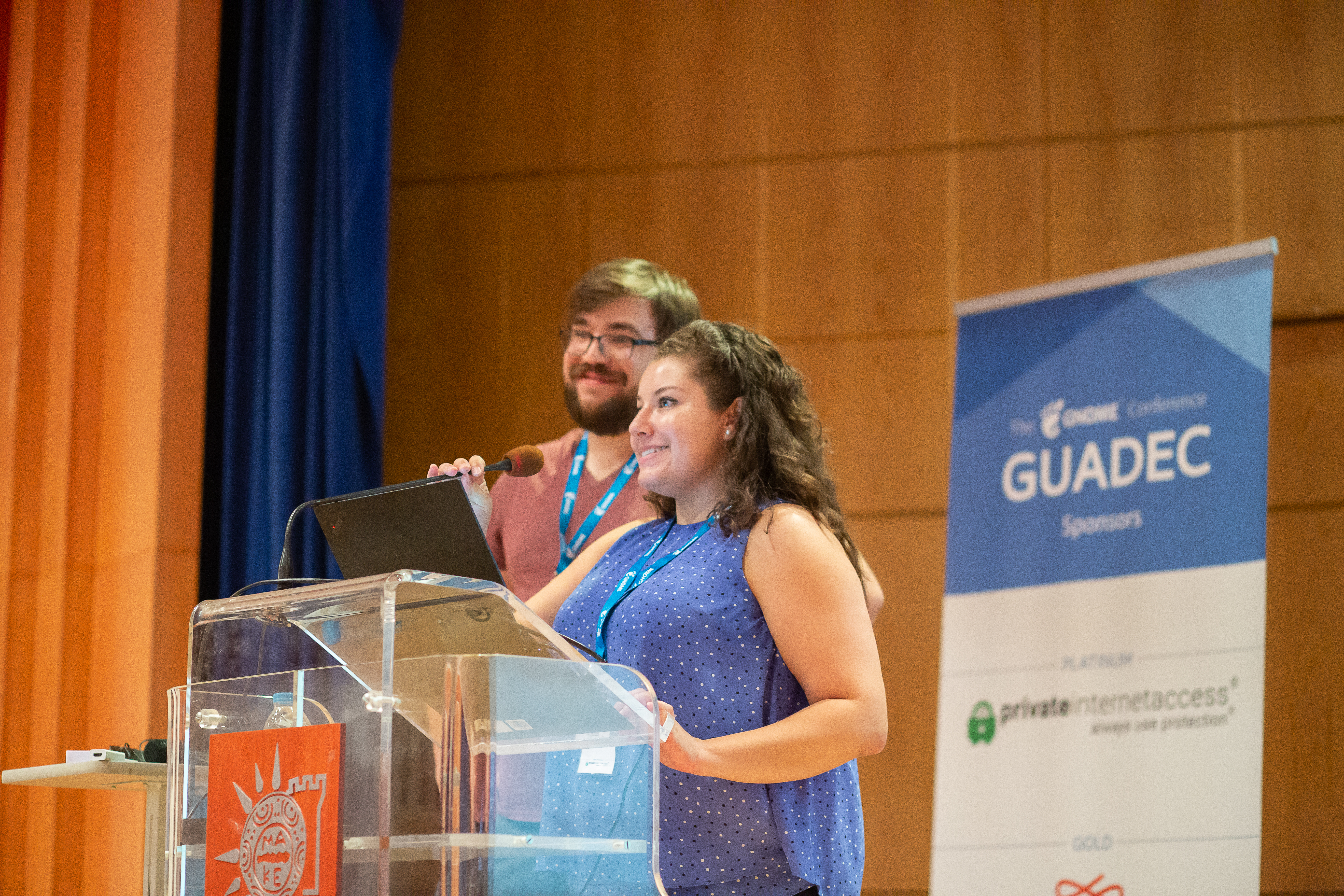
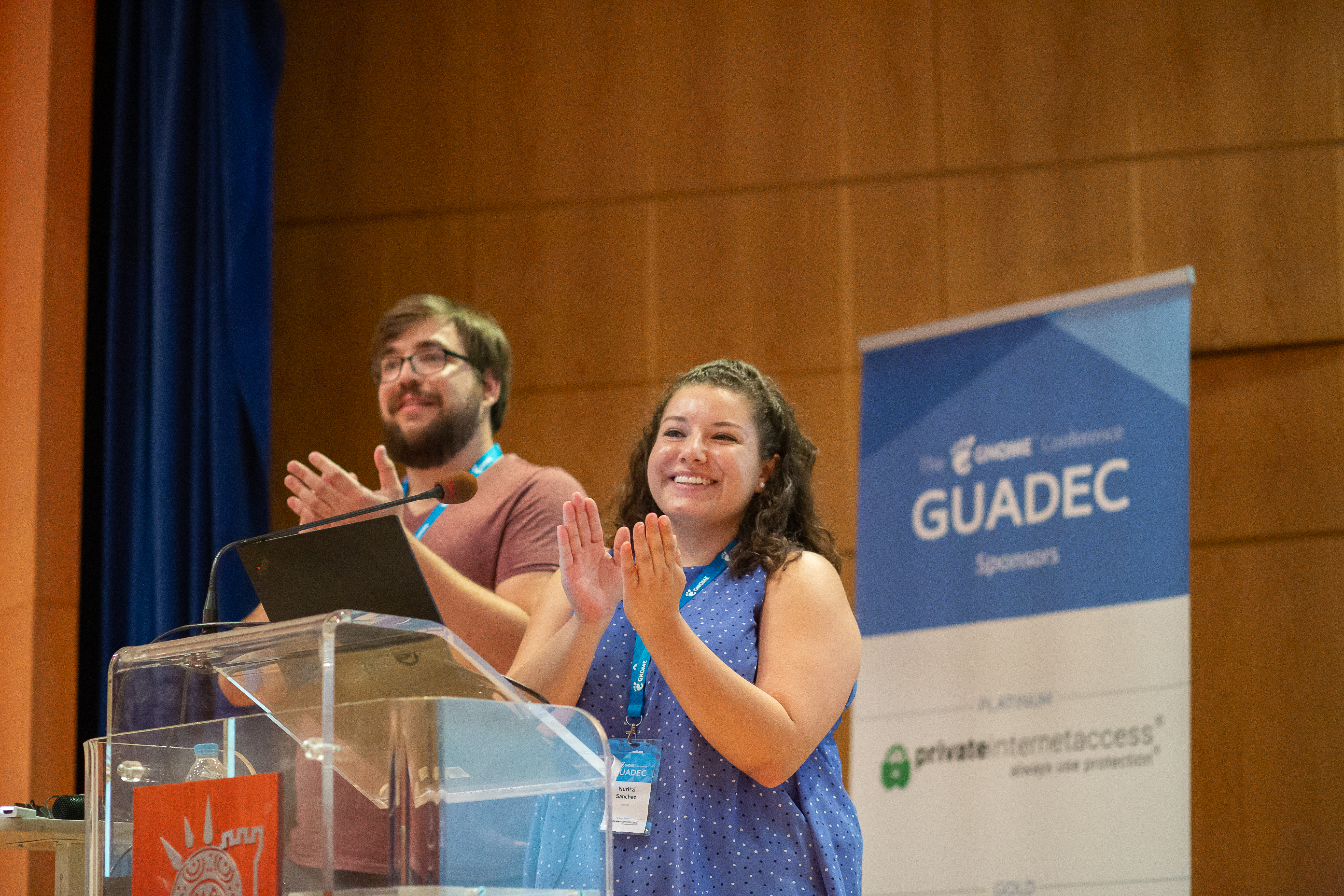
Social Events
I didn’t participate in as many of the organized social events this year, but I still got my dose of fun and connection while at GUADEC. Here are some pictures from my time in Greece!
BoFs
Birds of a Feather sessions (BoFs) are where people who are interested in the same topic will get together during a conference to discuss and/or work on that topic.
This year, I helped organize two BoFs: the Engagement and Inclusion and Diversity BoFs.
Engagement BoF
After going around and saying hi to newcomers and explaining what the Engagement team does at GNOME, we ended up splitting up into three groups to work on more specialized topics:
- Moving to MediaWiki – Britt led the group that talked about moving our current wiki to MediaWiki. Our current wiki is somewhat problematic since it’s locked down due to issues with spam. This means newcomers can’t easily access it, which kind of defeats the purpose of having a wiki.
- University Outreach – Caroline led the group that talked about engaging universities and doing outreach to students. This is something that is really important to the longevity of GNOME. Lots of people seem interested in helping with this, but we need one or more people to lead the initiative in the longer-term.
- Impact at GNOME – I led the group that talked about measuring impact at GNOME. We kept in mind the newly announced goals for the GNOME Foundation as we did this.
Before we left GUADEC, a few of us also got together to talk about a possible Website Redesign. A redesign is something that we have been talking about for a while now, and something that we need help with.
If interested in any of this, you can read the full Engagement BoF Notes, or reach out to get involved. We need more people to join the Engagement team!
For those interested, the Engagement team meets regularly, and meeting dates and times are posted to the GNOME Discourse instance.
Inclusion & Diversity BoF
During this BoF, we talked about things that went well during GUADEC, things that could be improved, and general ideas we had around how to make GNOME events and the community feel more inclusive.
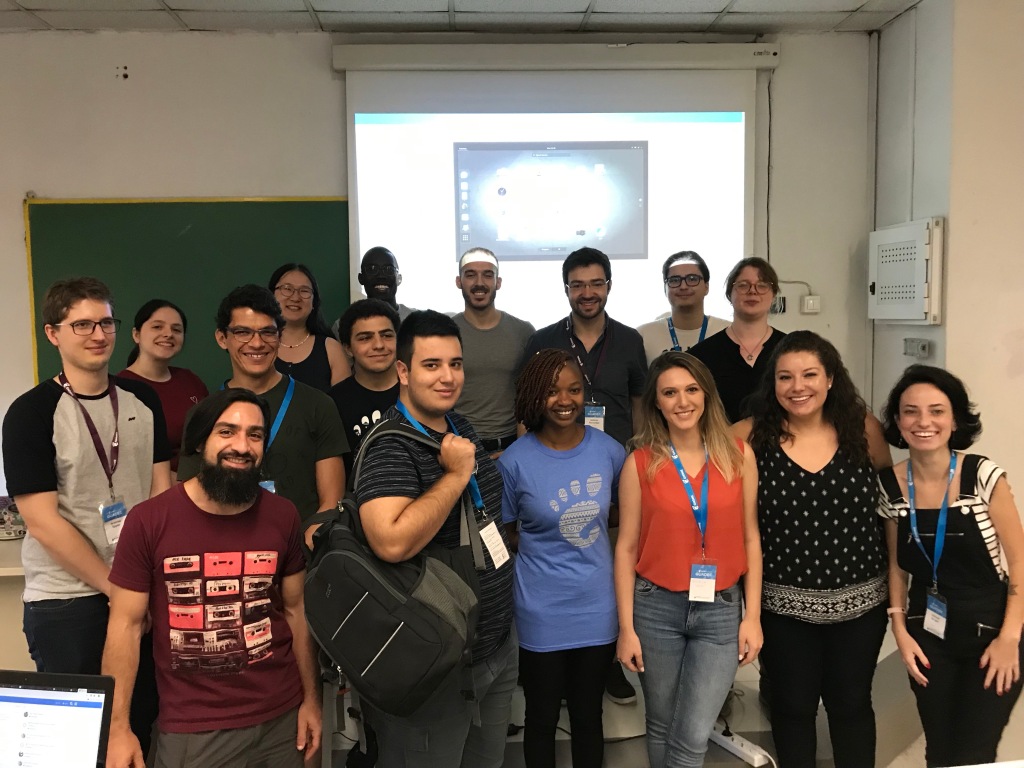
We had a lot of GSoC, Outreachy, and newcomer participants, and we ended up having some really good insights. Something that newcomers mentioned is that, even with information about social events on the website, they did not feel like they knew what was going to happen, when, nor how to sign up and participate.
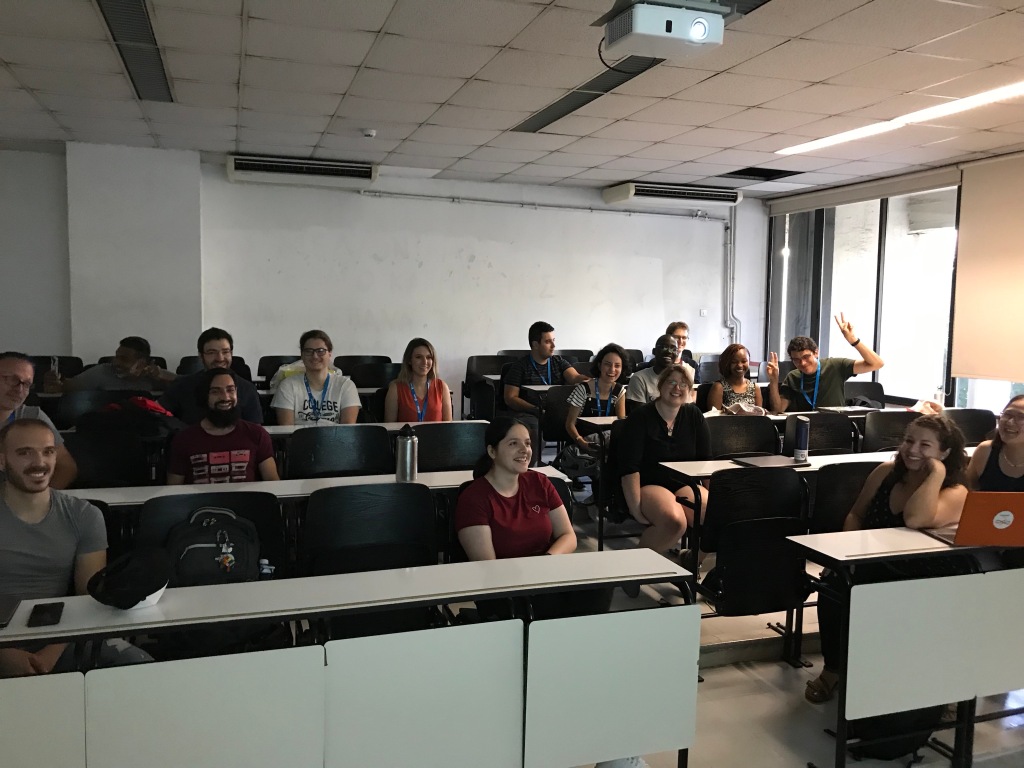
Many of the social events this year required people to sign up beforehand, so it makes sense that newcomers felt a bit left out since they weren’t already on email groups or social media, especially if they hadn’t spent a lot of time on the GUADEC website. The interns who participated in our BoF mentioned that social events had been one of the highlights of the conference for them (because it helped them get plugged into the community), so they thought that making these social events accessible to everyone is very important.
For the full list of insights and more, check out our notes here: Inclusion and Diversity BoF Notes.
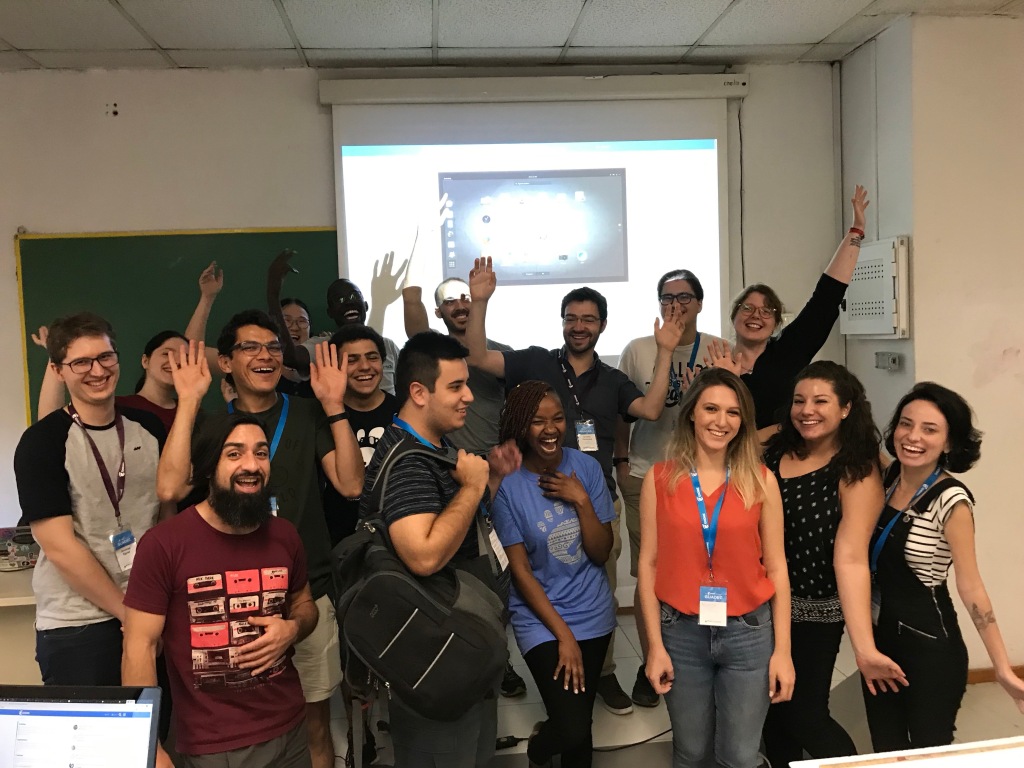
Ok, that’s it. Thanks for reading, or at least skimming, this super long post 🙂
